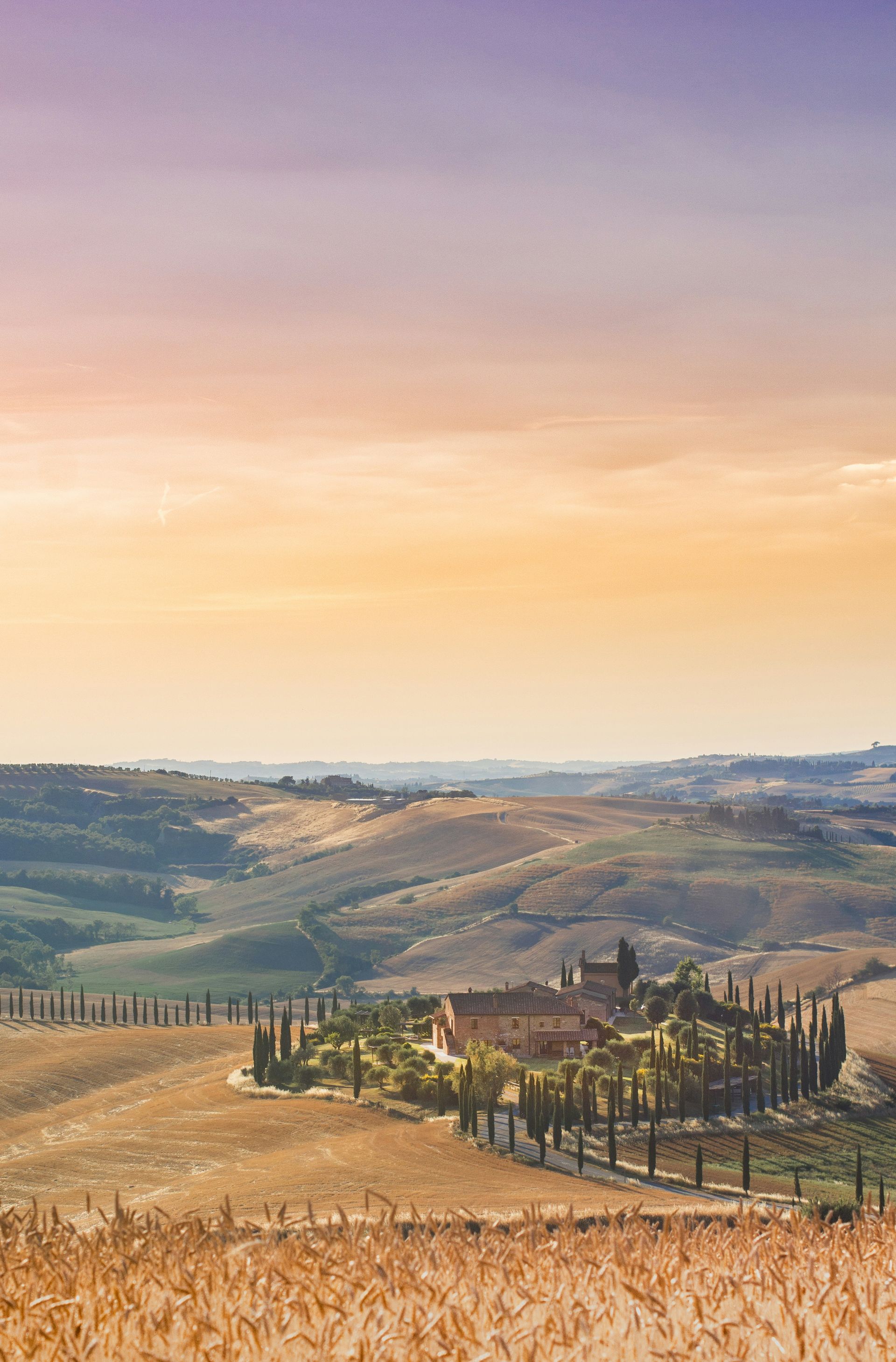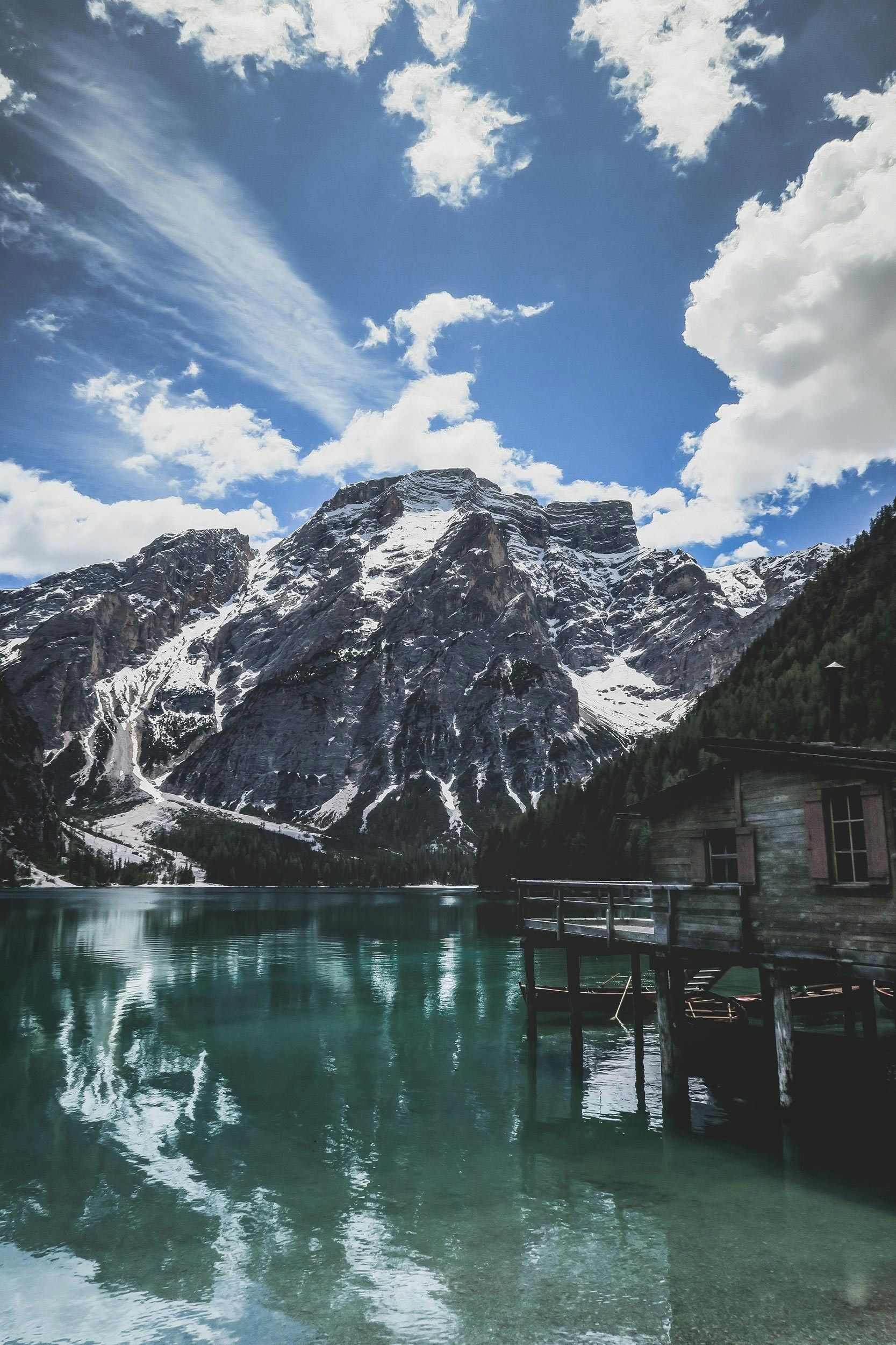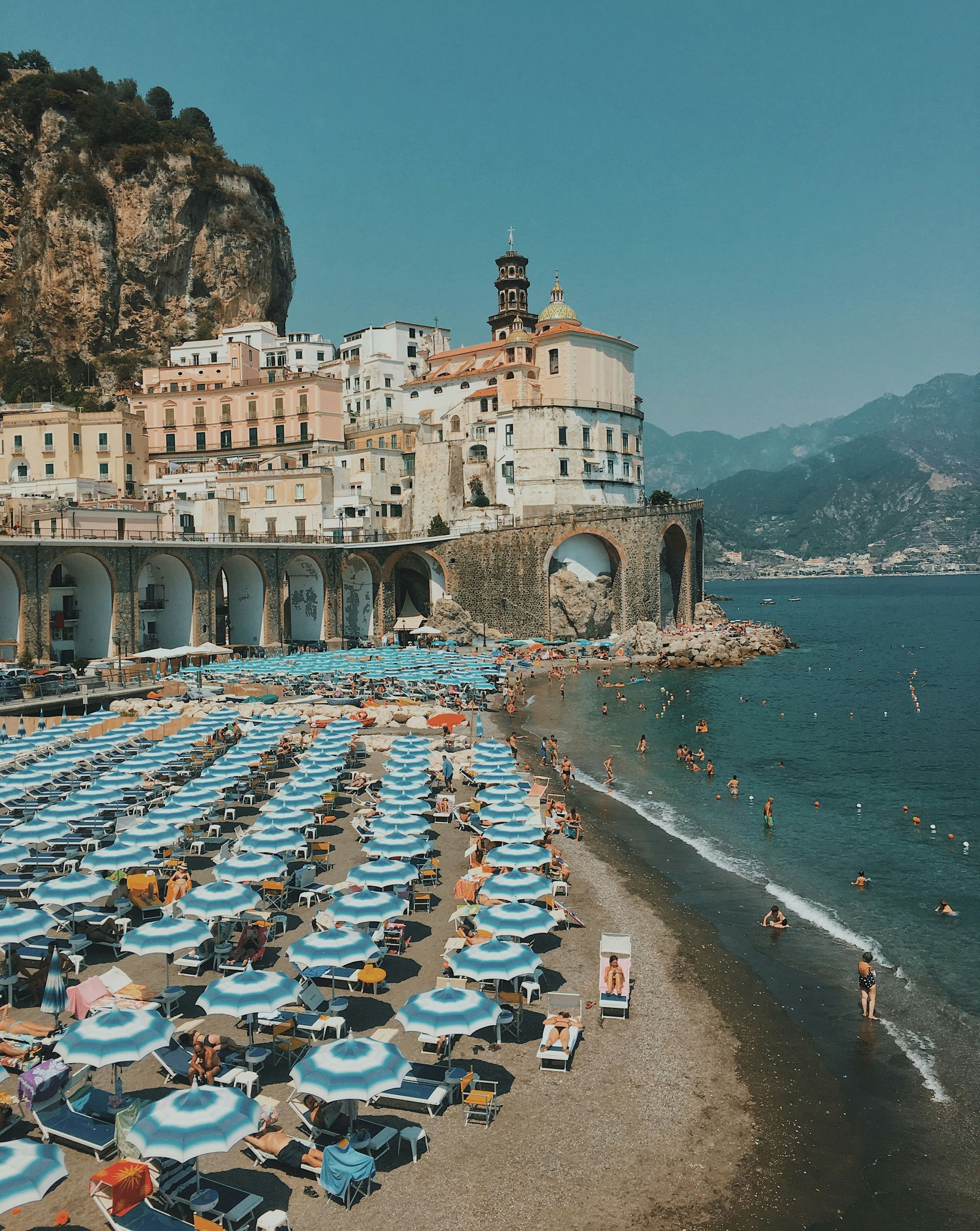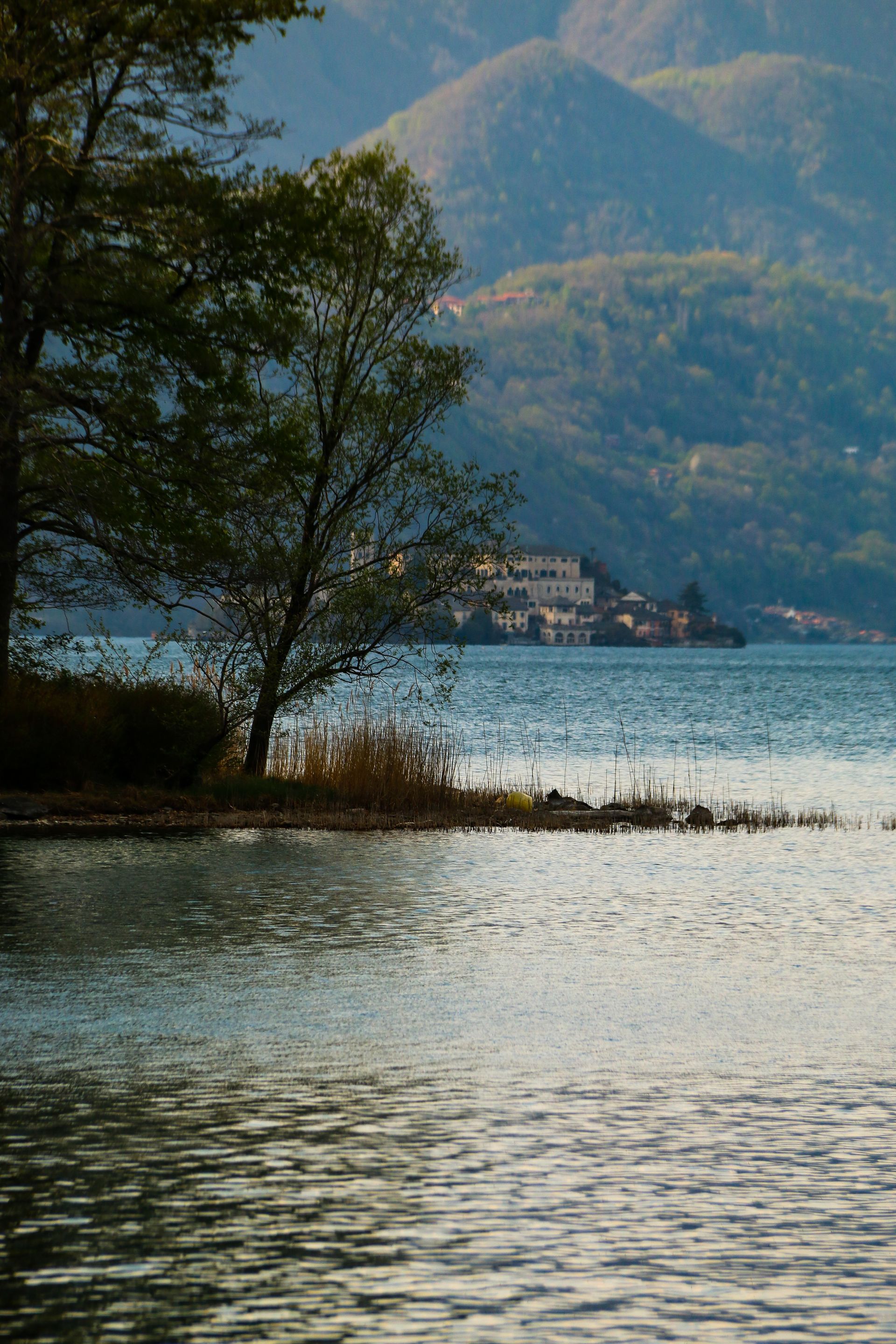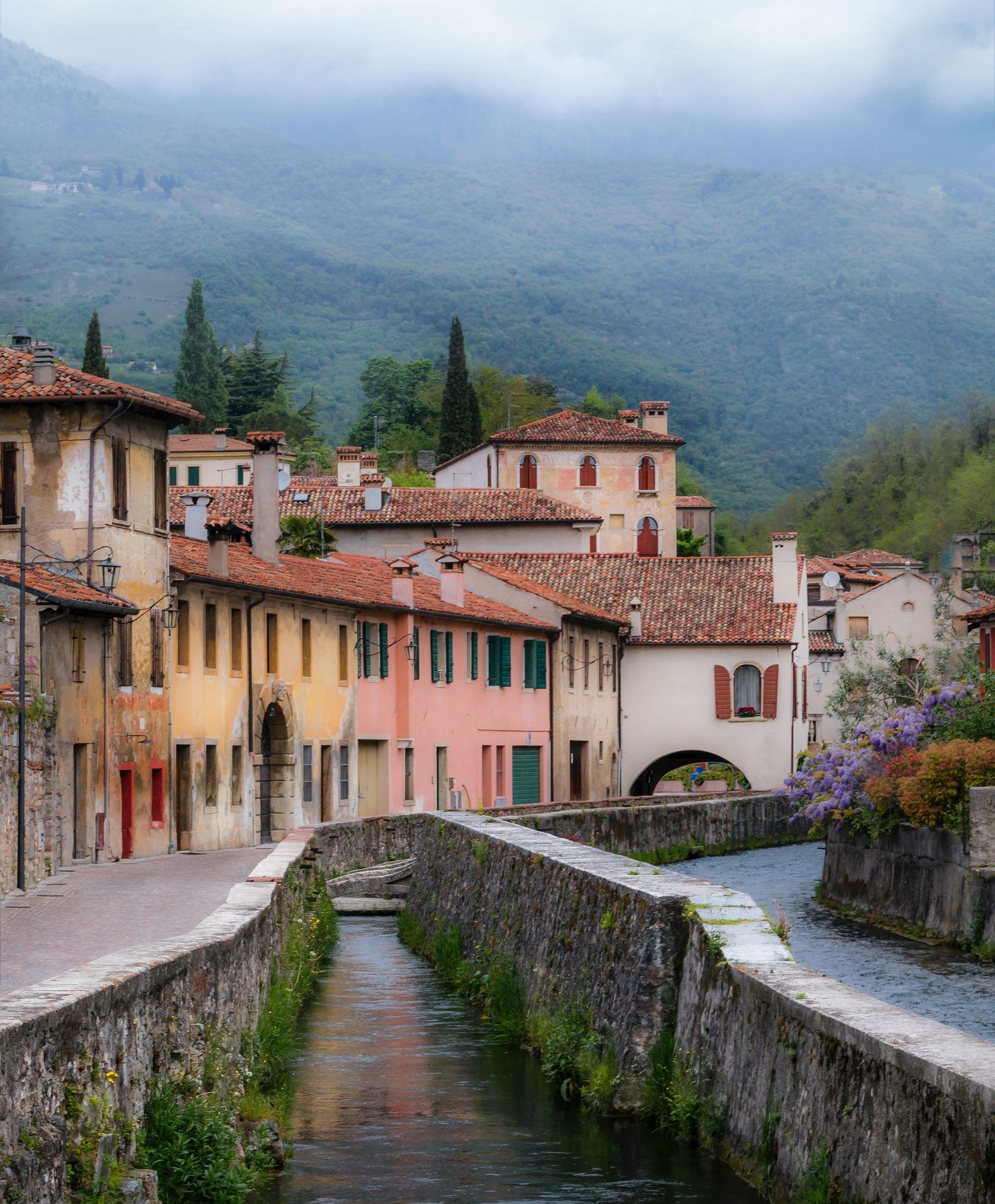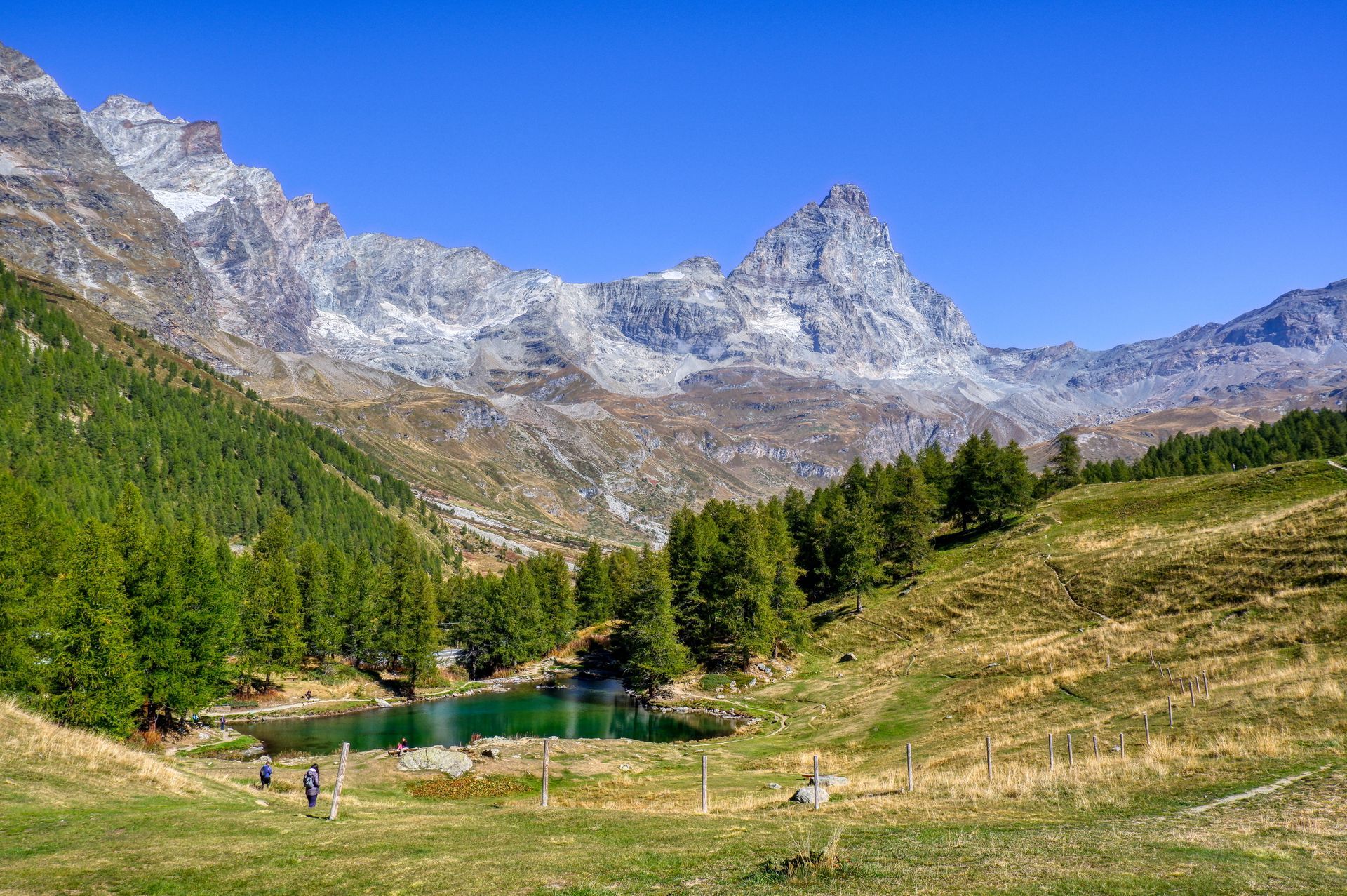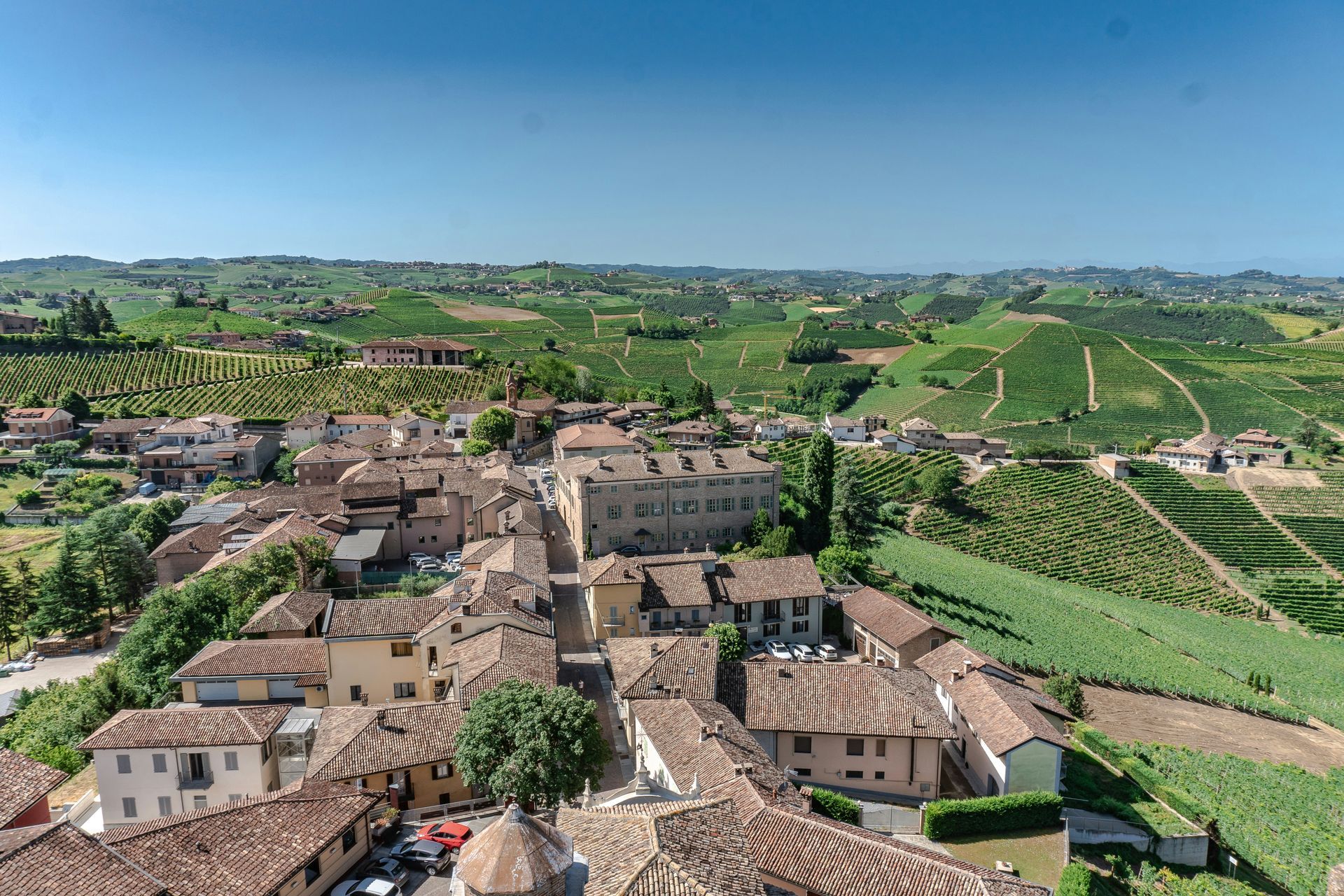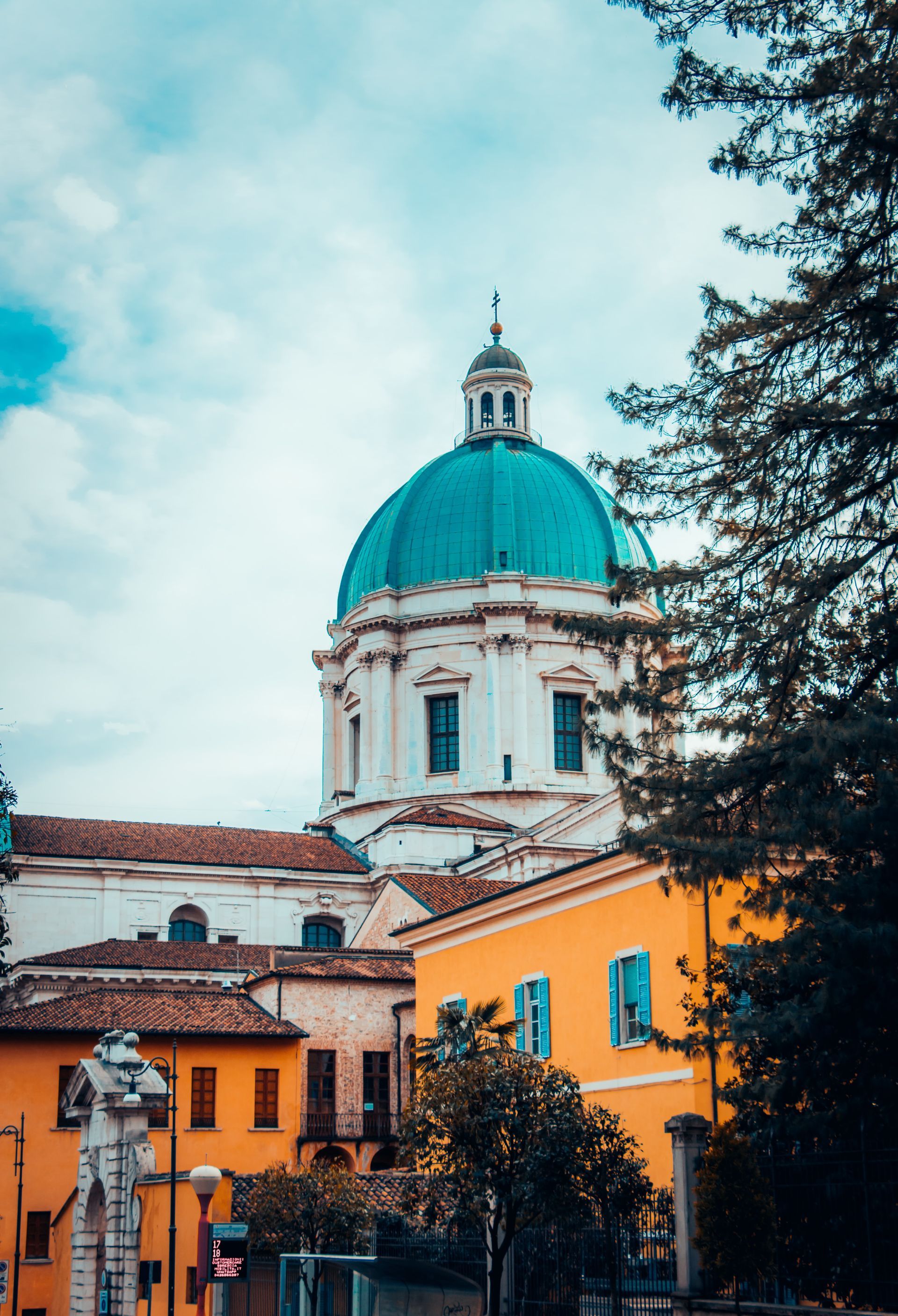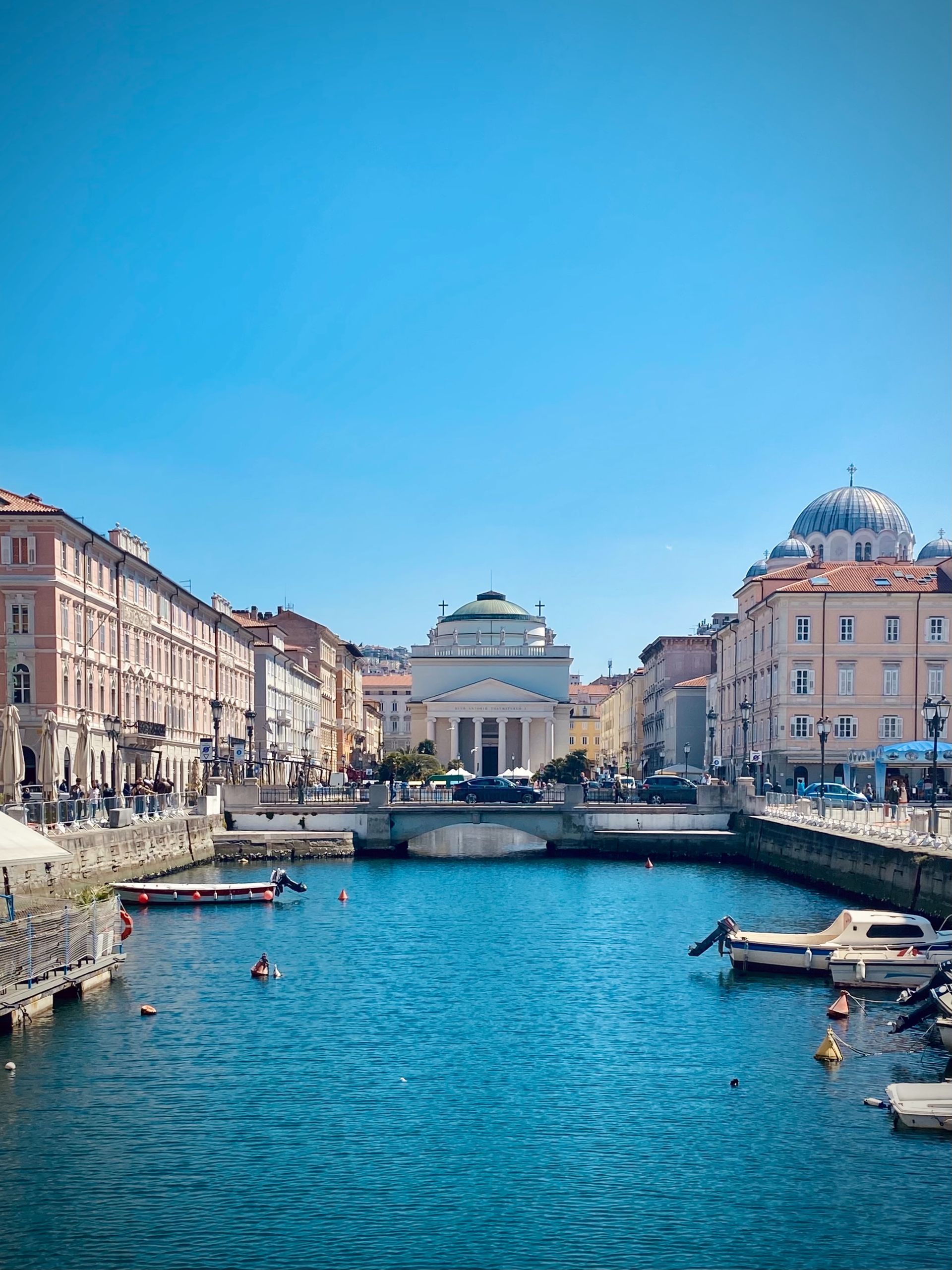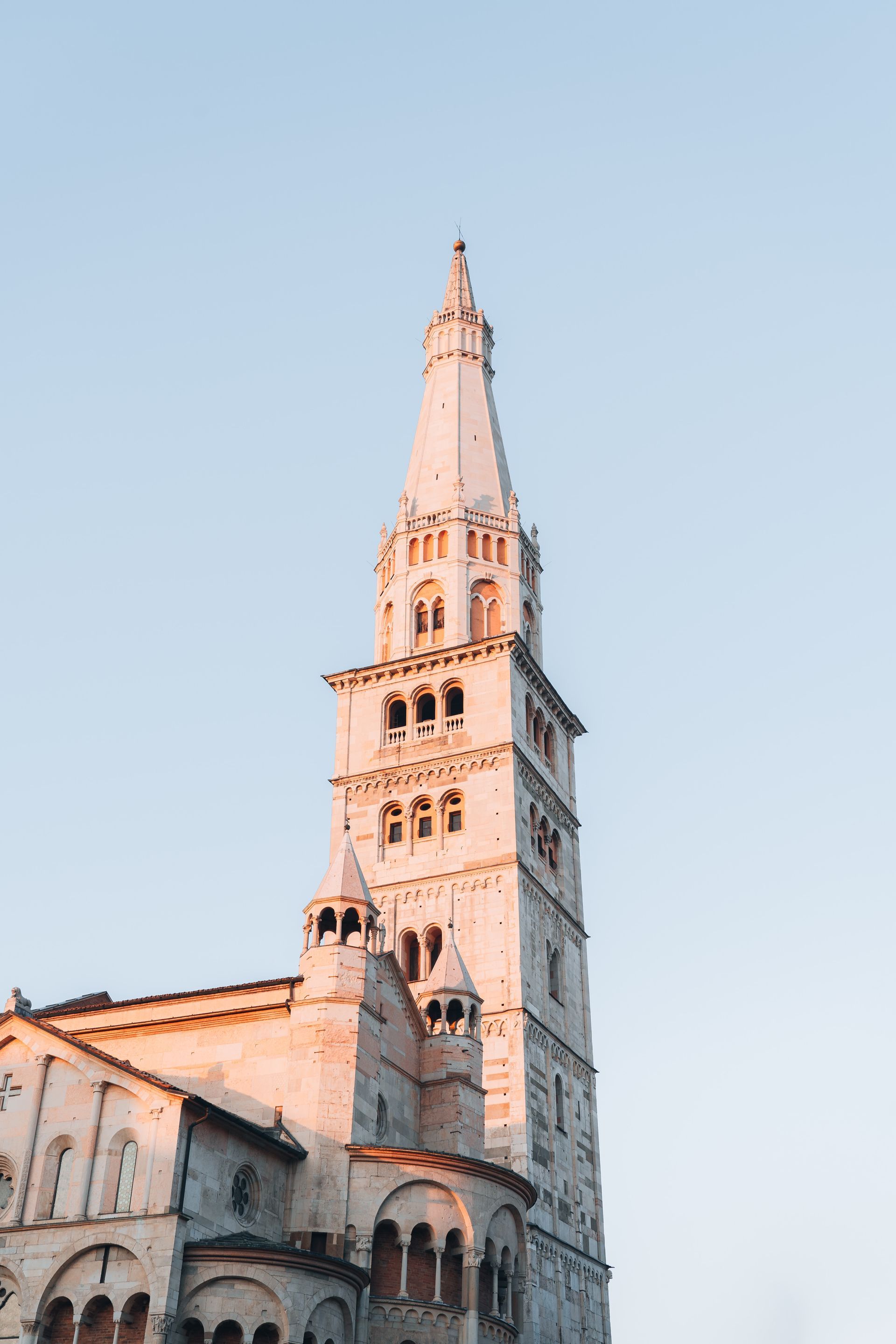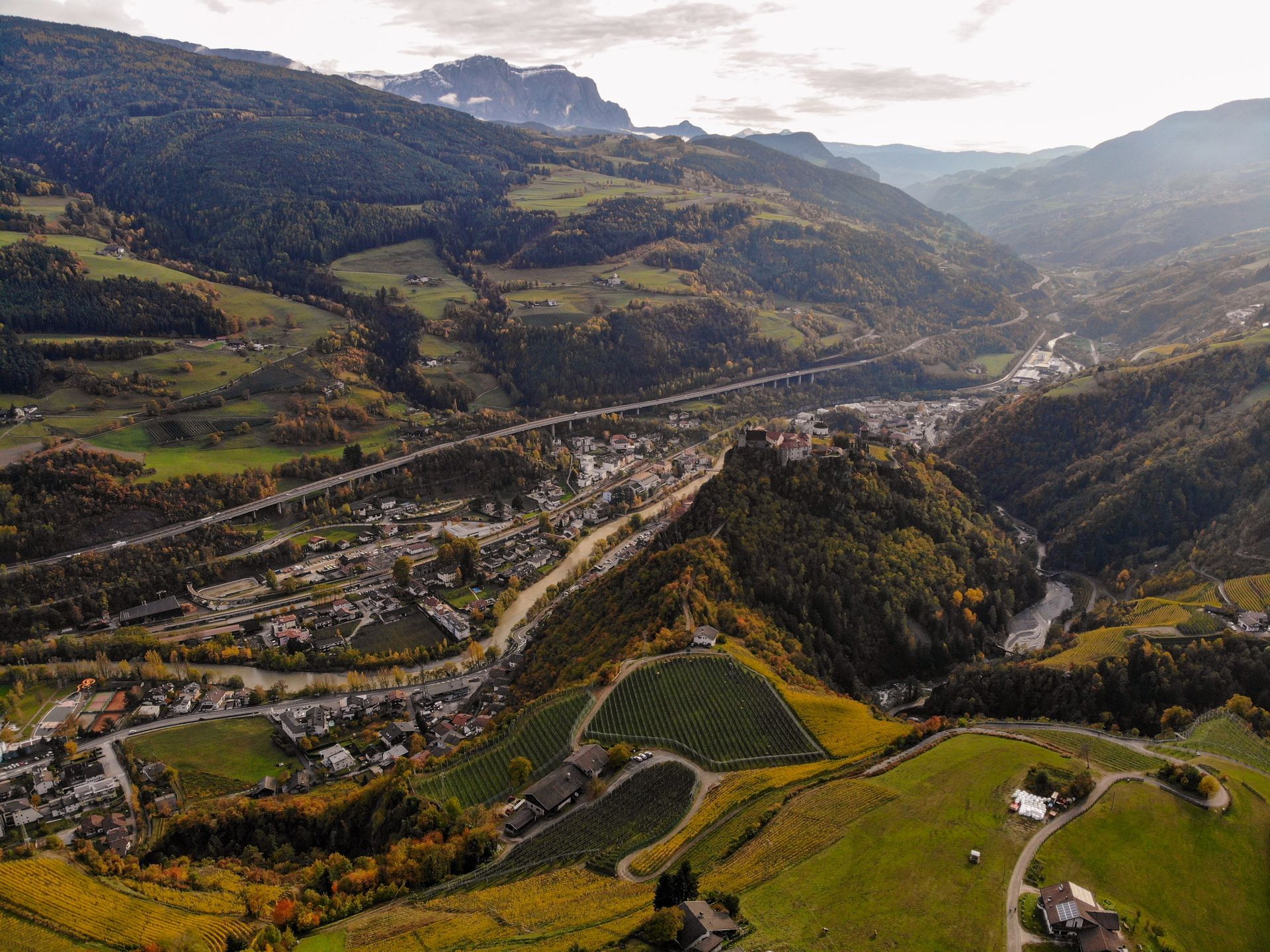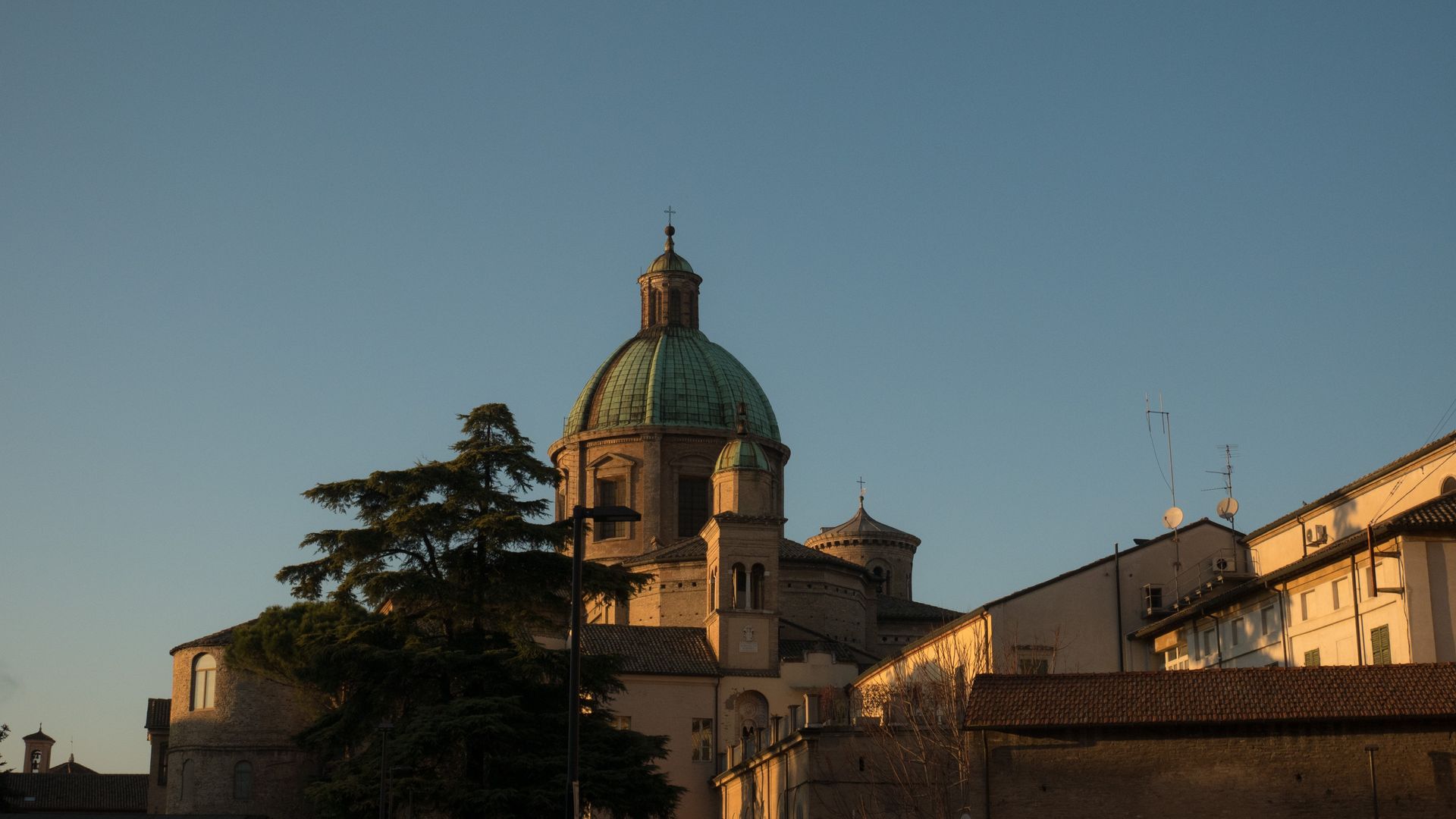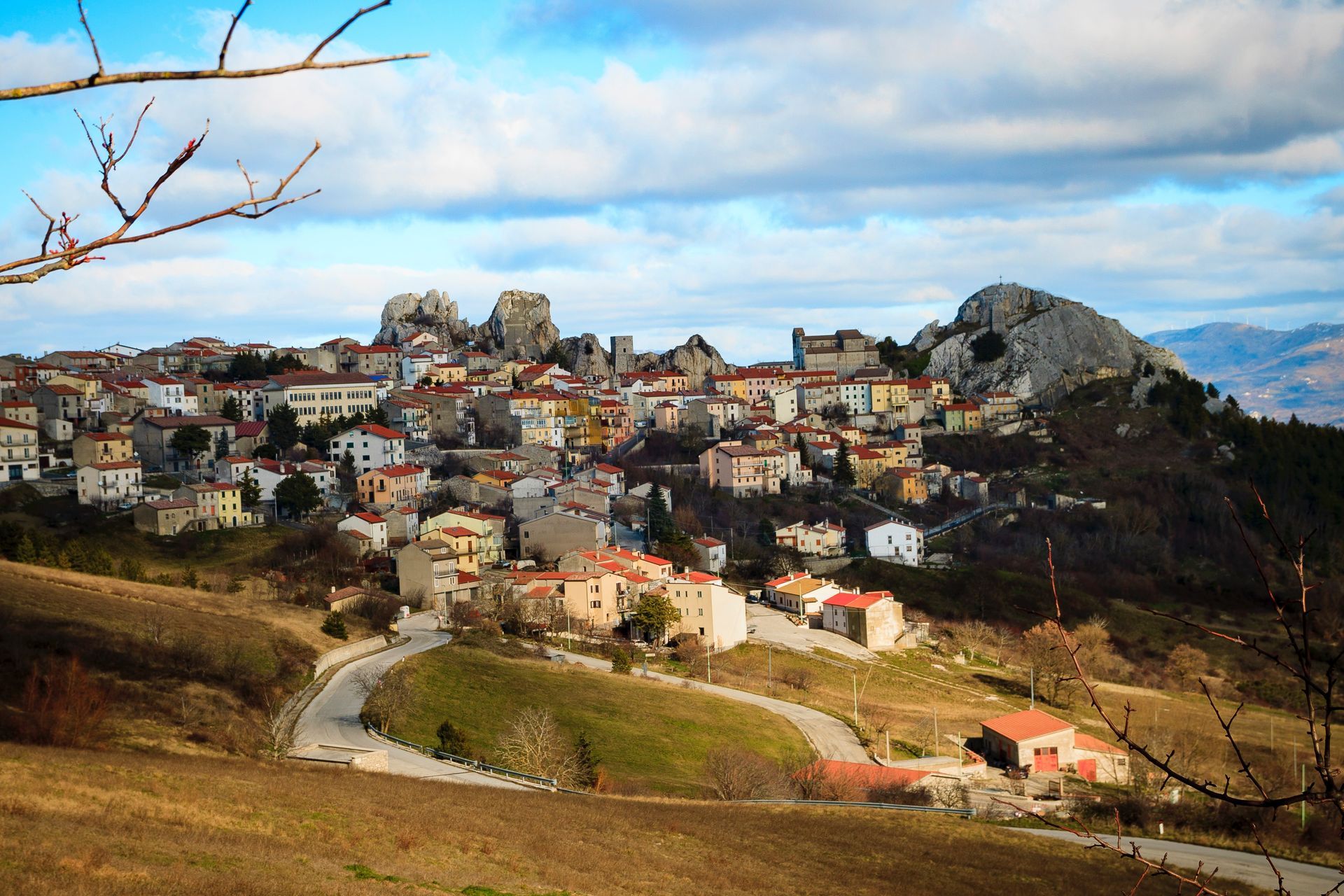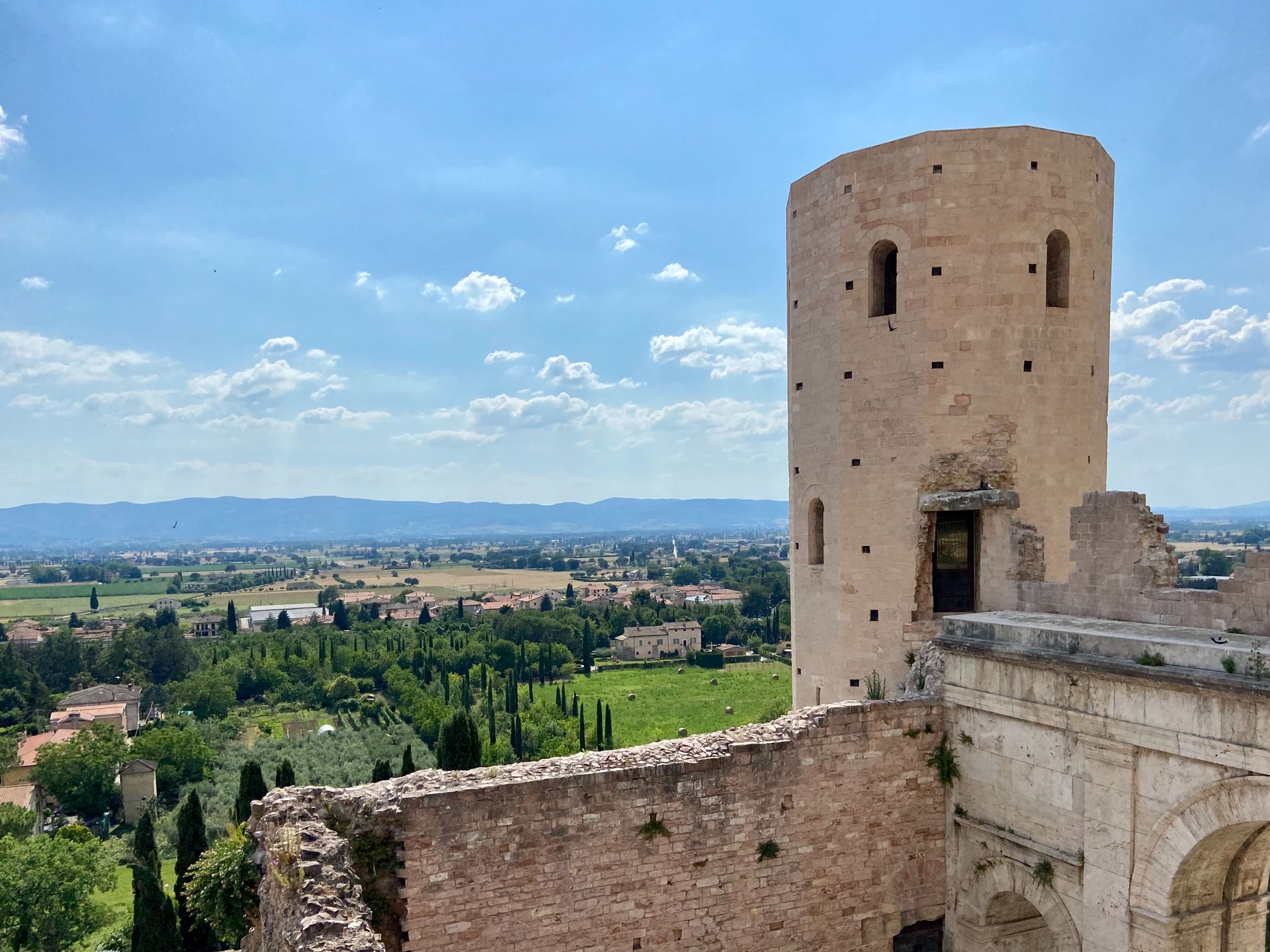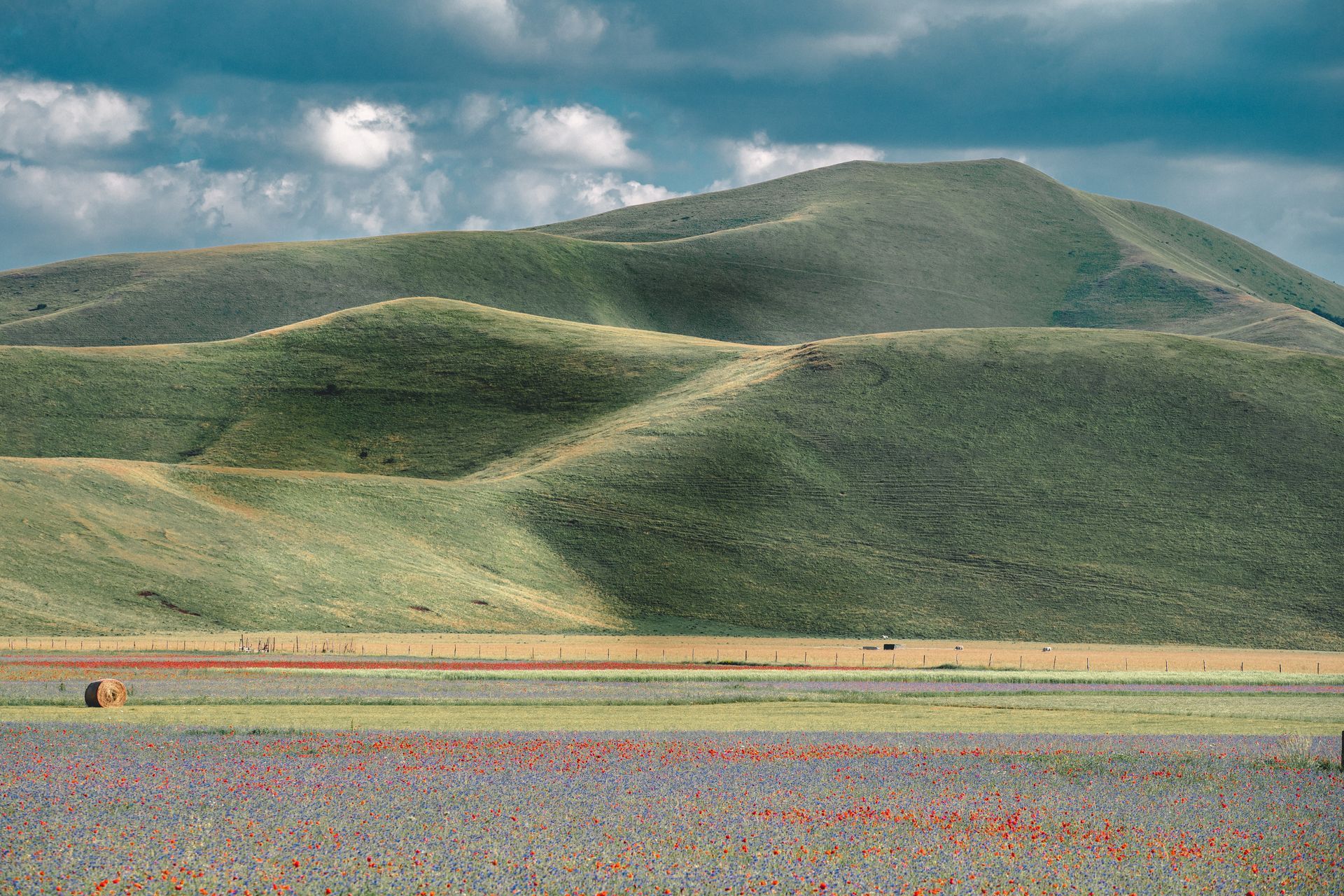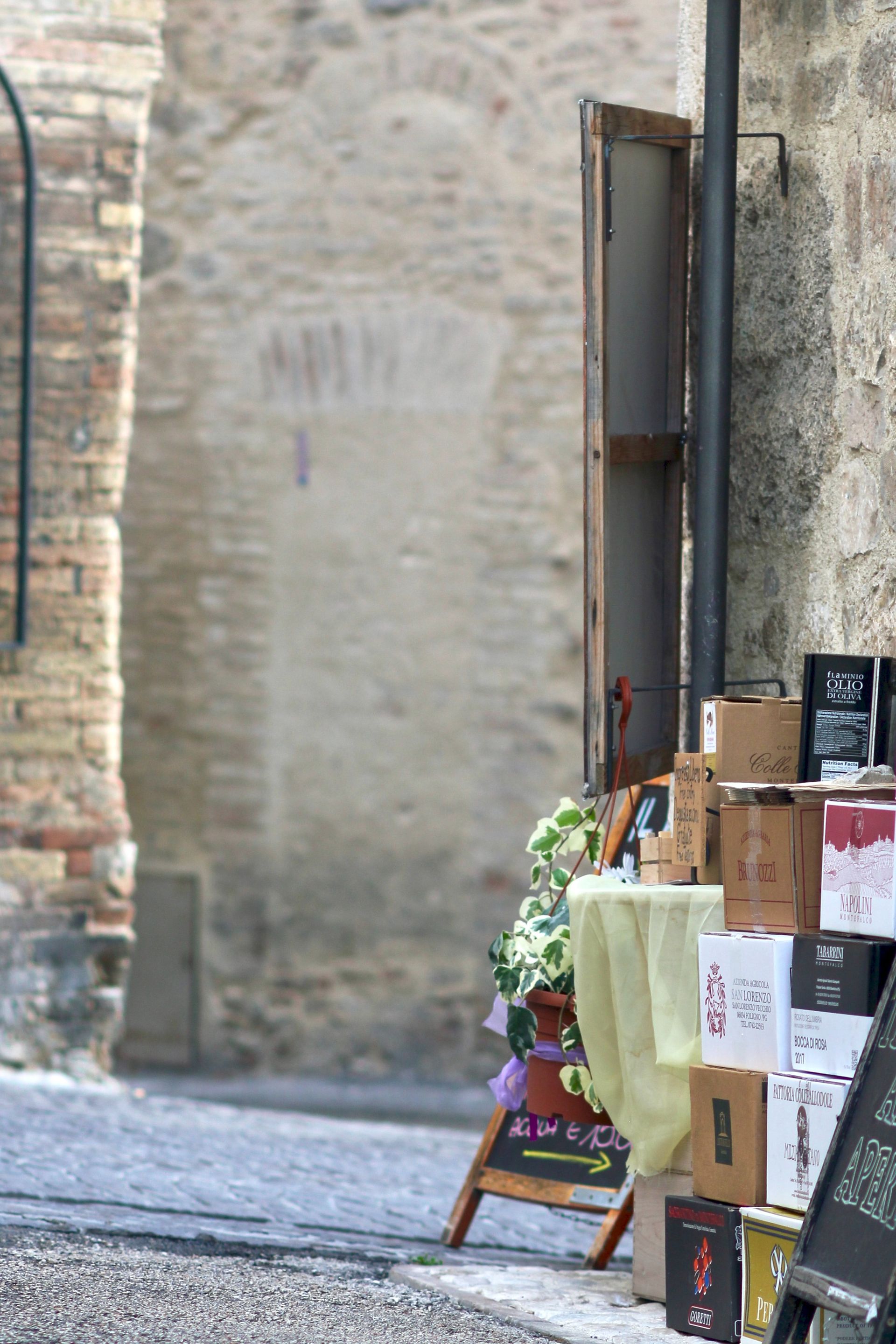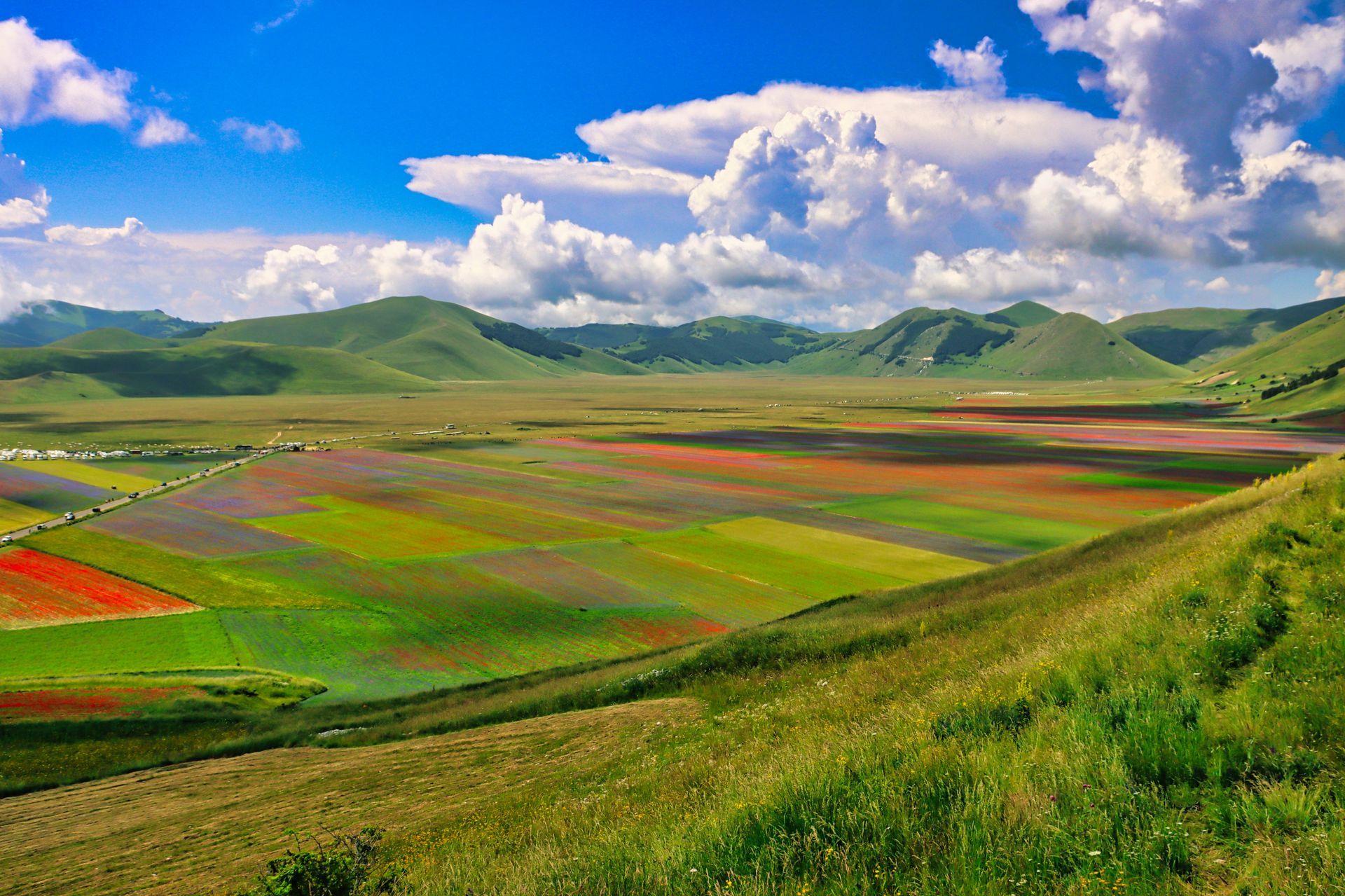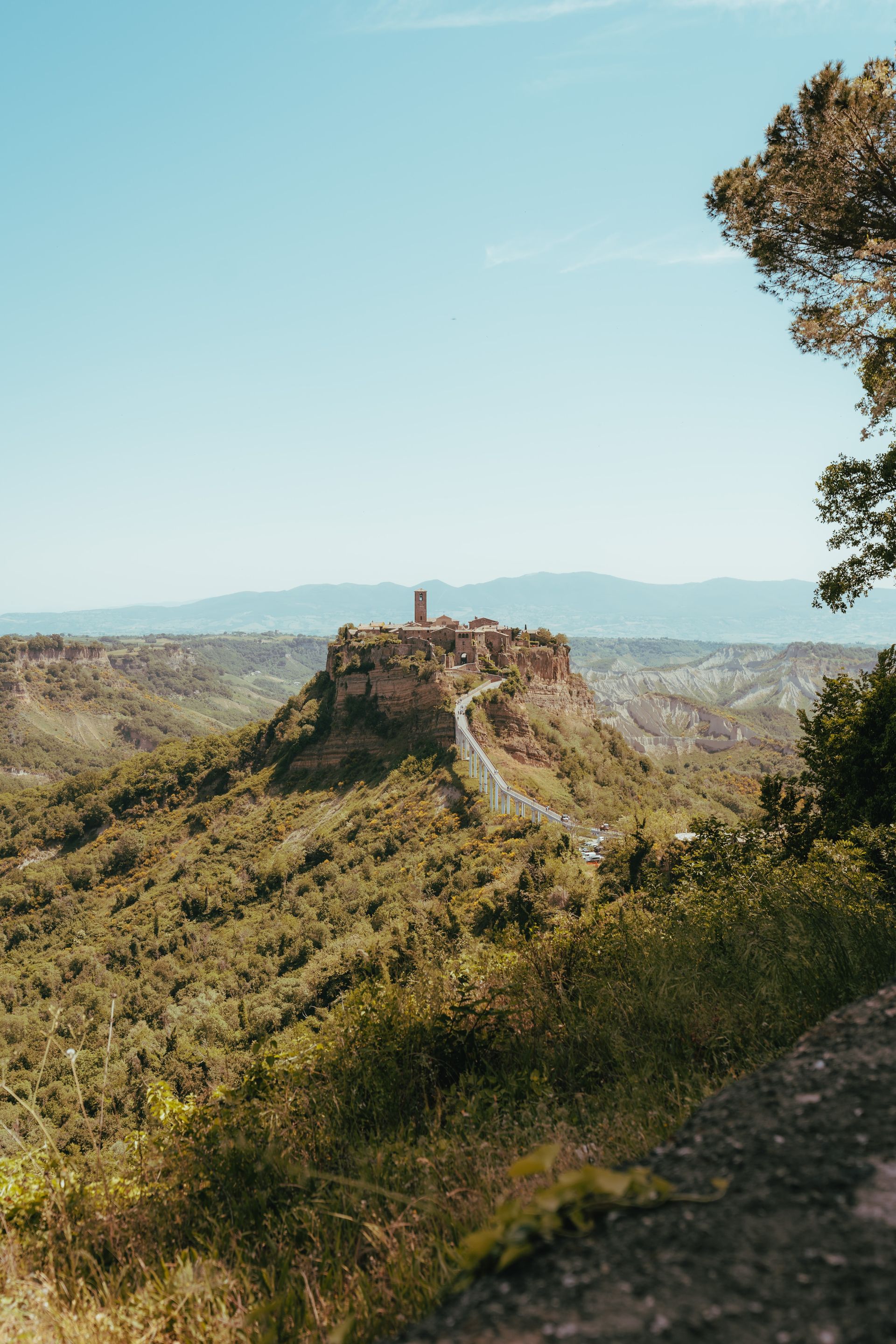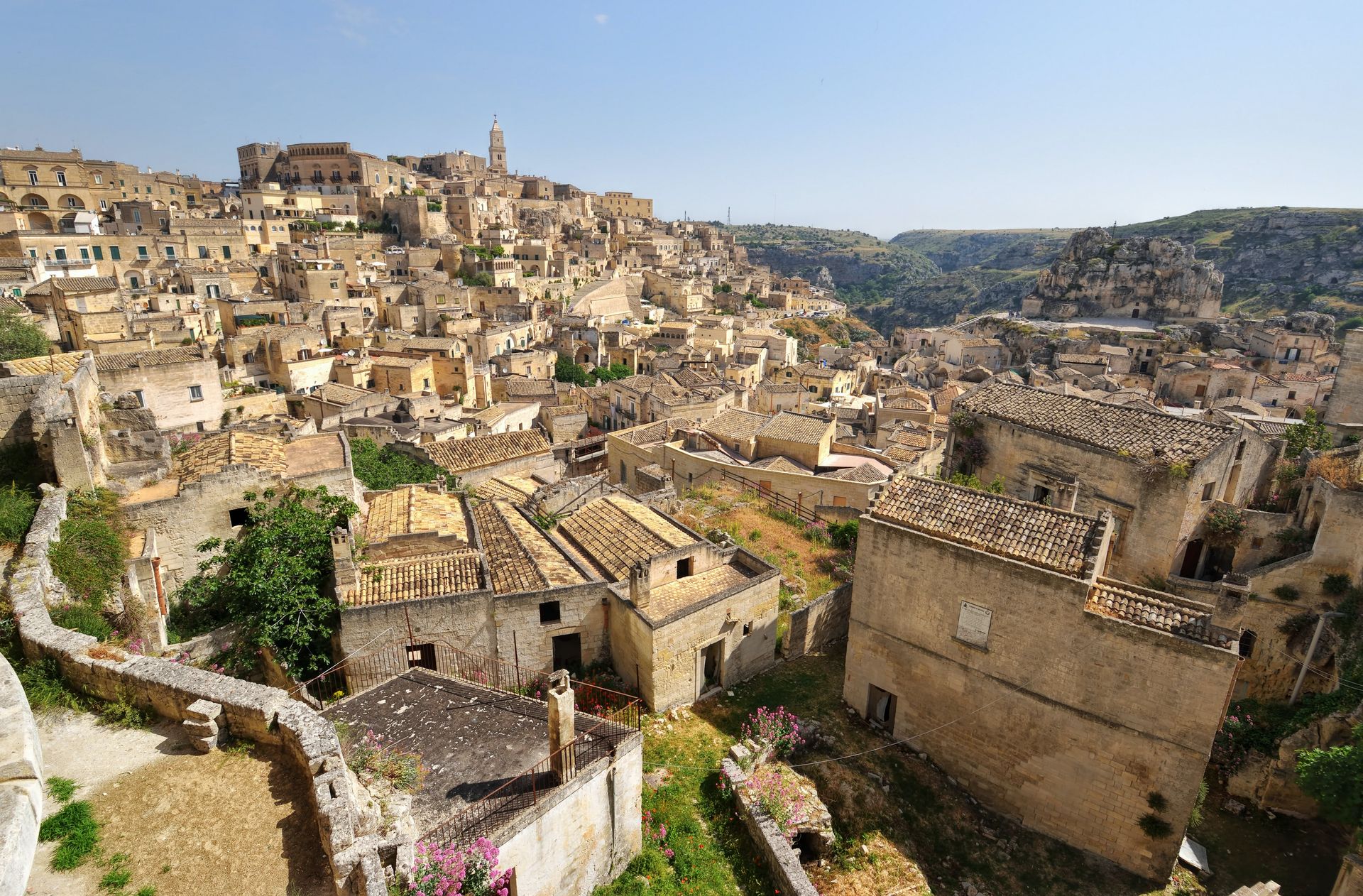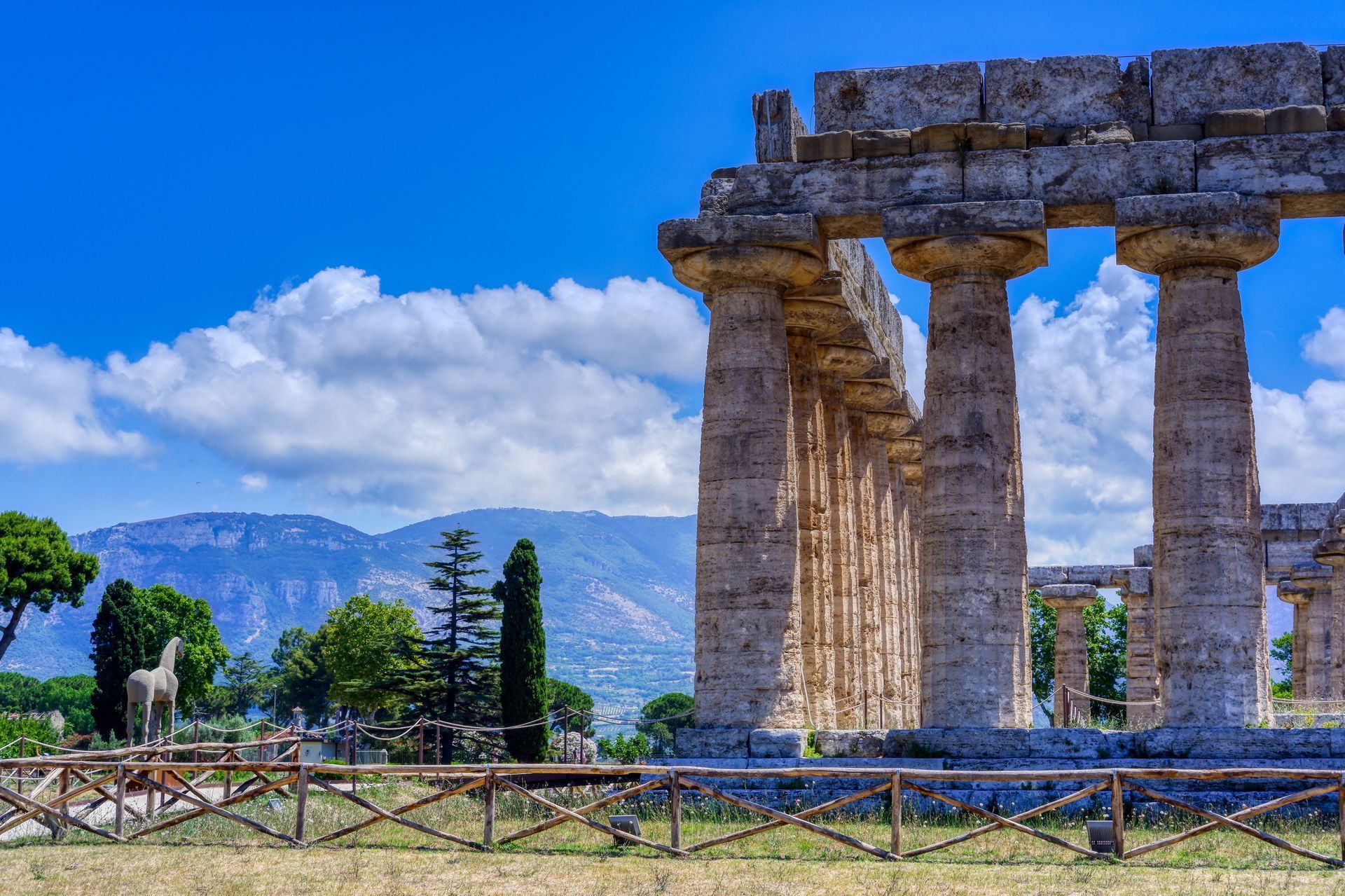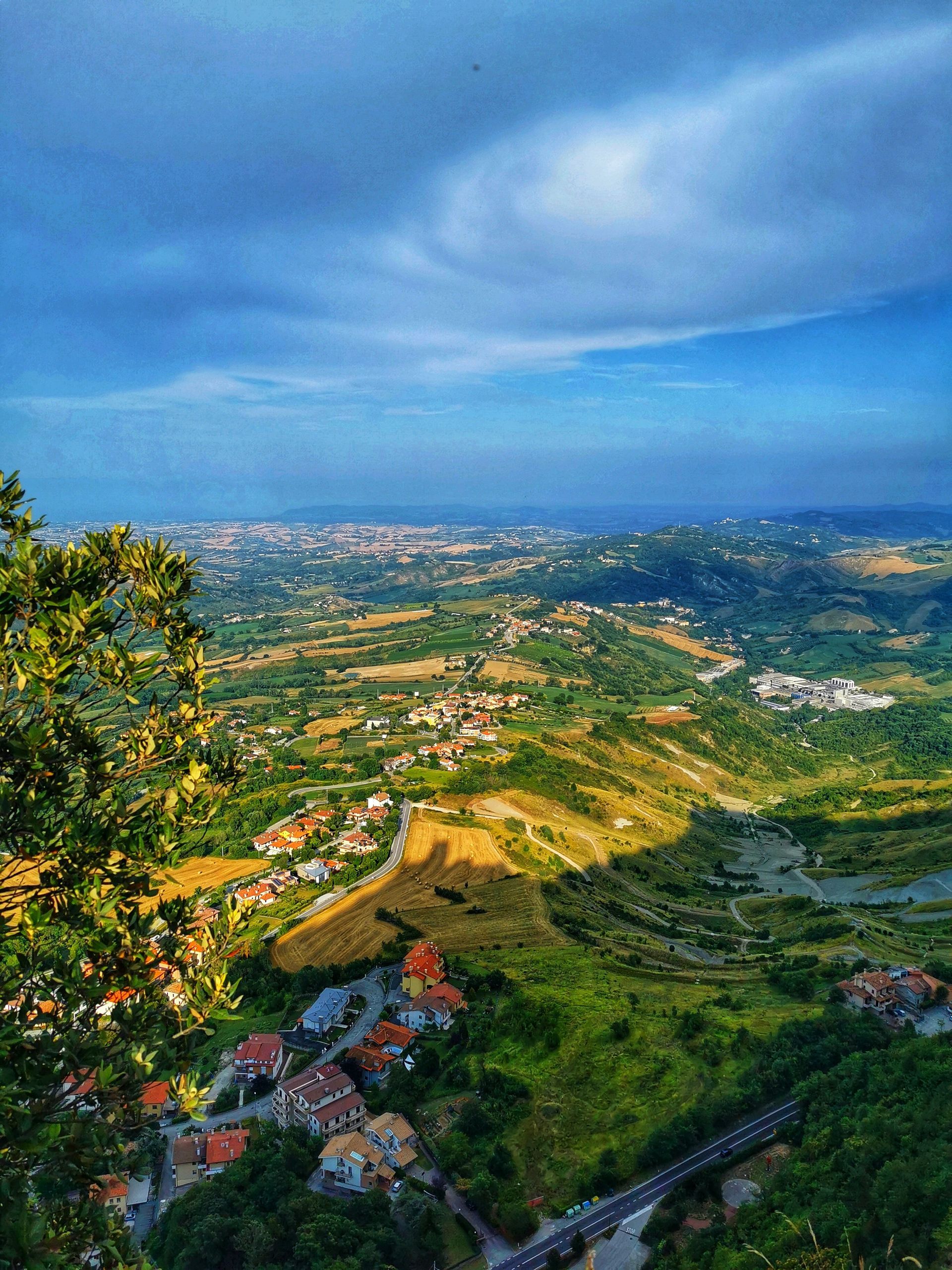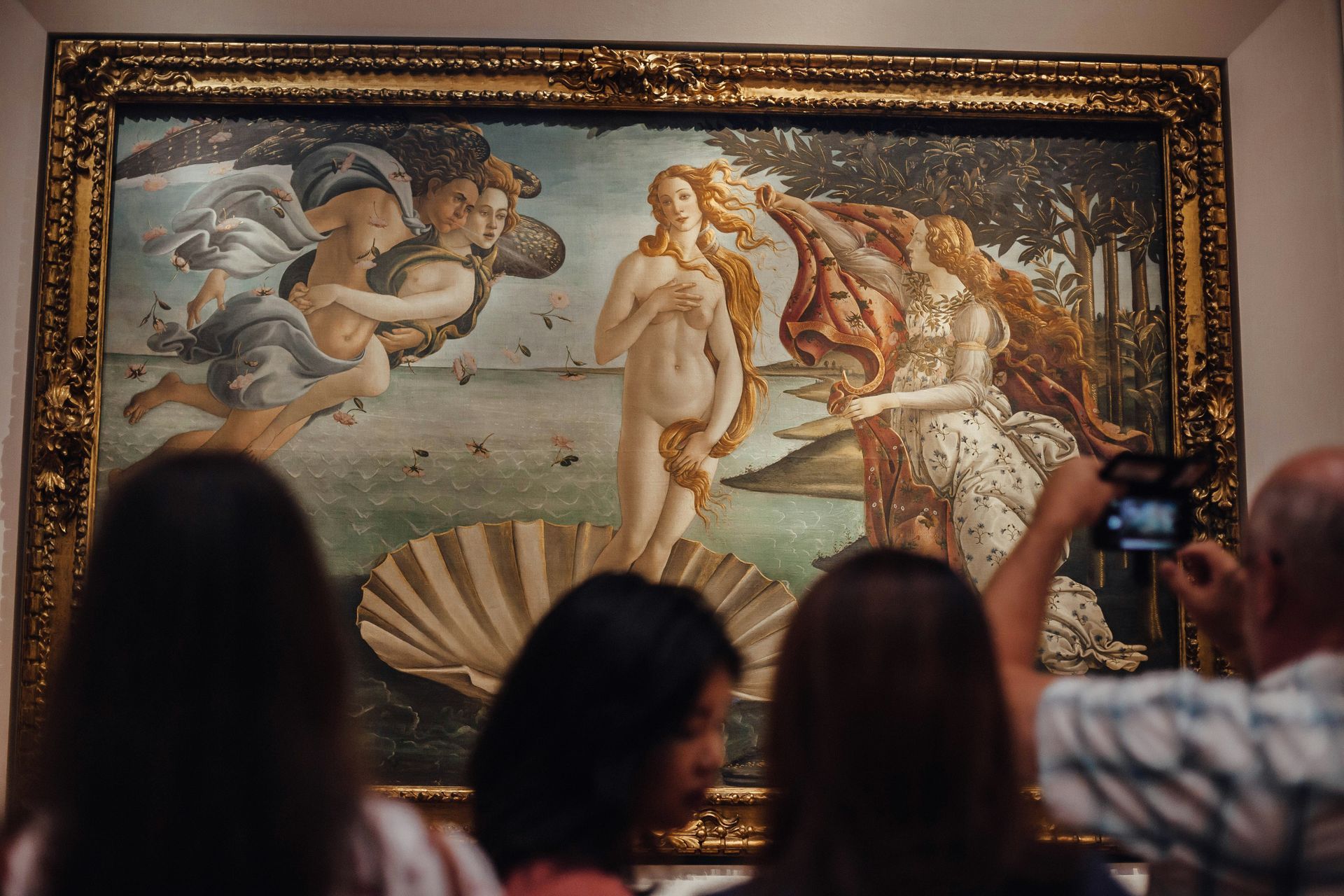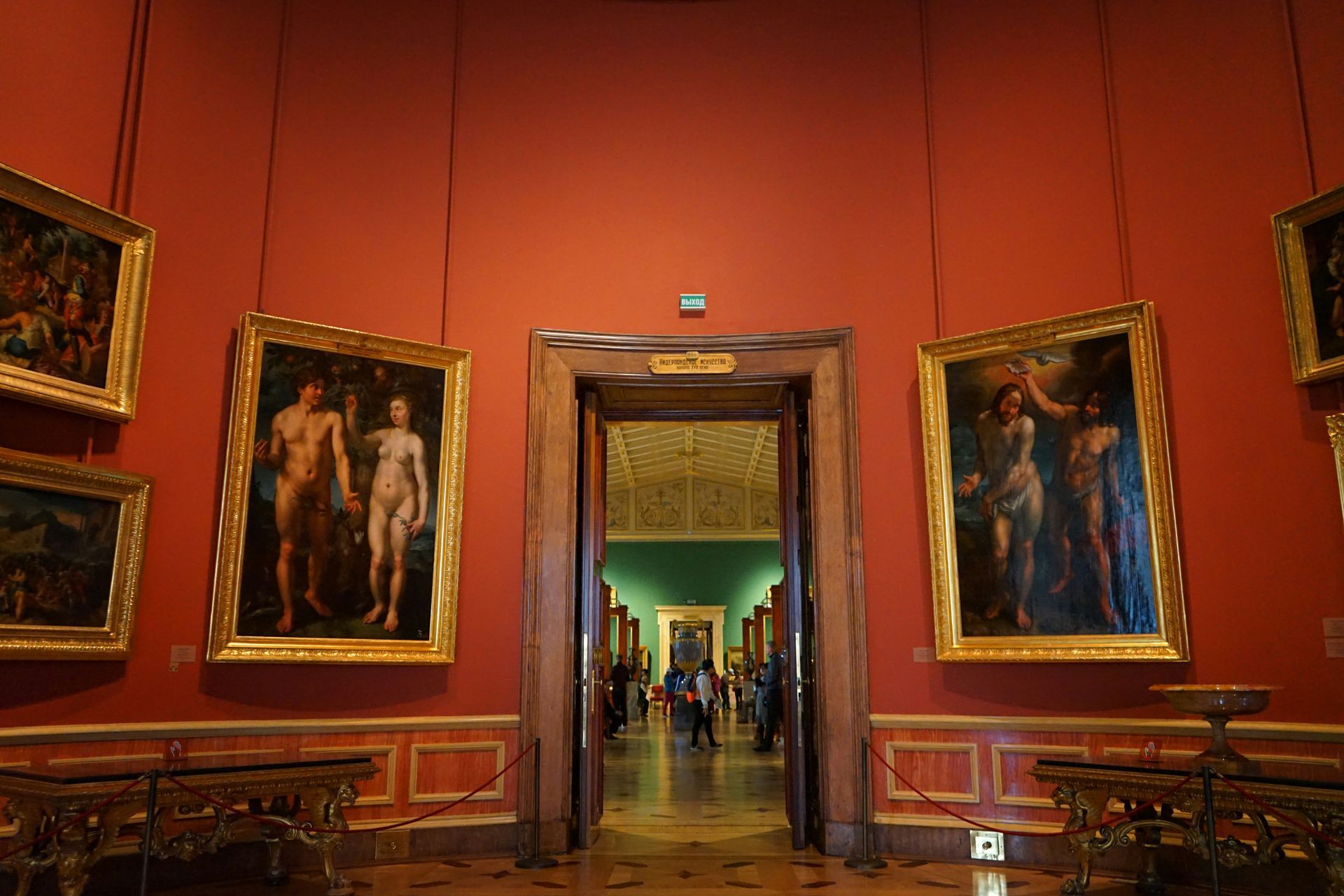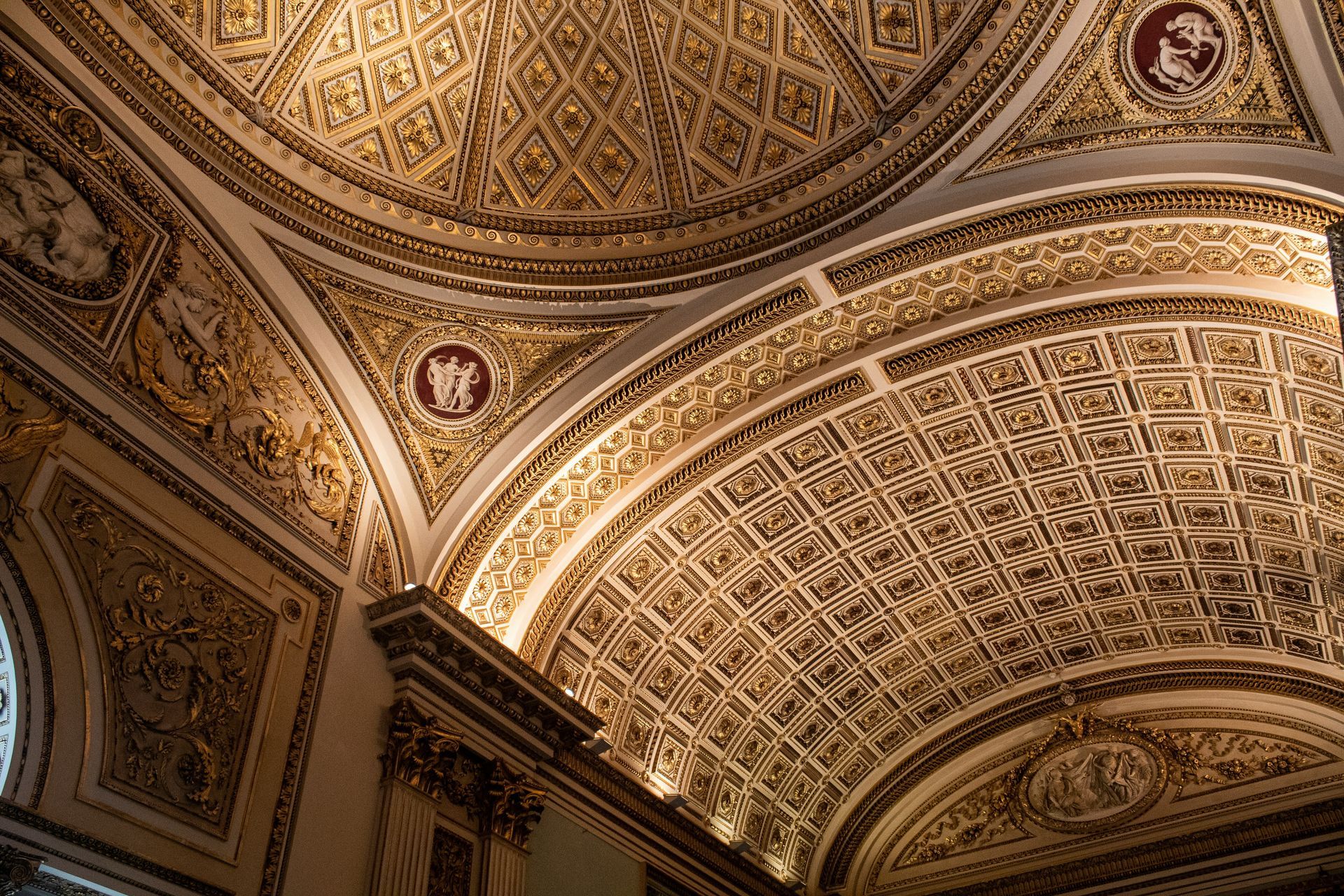Spreading Smile across the globe
Hidden Gems of Northern Italy
Hidden Gems of Italy are a testament to the country's diverse and enchanting beauty, often concealed from the traditional tourist routes. While Italy is celebrated for its iconic cities like Rome, Florence, Venice, and the Amalfi and Cinque Terre coasts, it's the lesser-known destinations that promise a unique journey. These unexplored regions offer travellers a chance to experience Italy's authentic culinary delights, rich historical narratives, and stunning natural landscapes. From the northern reaches to the southern shores, these Hidden Gems of Italy reveal a different facet of this remarkable nation.
Lake Orta - Piedmont
Hidden Gems of Italy come to life at Lake Orta, tucked away near the Swiss border in the heart of Piedmont. This hidden paradise often evades the spotlight compared to its more famous counterparts like Lake Como and Lake Garda. The historic town of Orta San Giulio, with its Baroque and Medieval architecture, cobbled streets, and idyllic Piazza Motta, enchants visitors. The glistening waters of the lake itself invite moments of serenity. What makes Lake Orta truly extraordinary is the mysterious island at its centre—a tranquil sanctuary inhabited by resident nuns.
Treviso - Veneto
Among the Hidden Gems of Italy, Treviso stands as a city in the Veneto region that retains its genuine northern Italian charm. Meandering through its narrow cobbled lanes, picturesque canals, and medieval city walls feels like a step back. Positioned on the fringes of the renowned Prosecco wine region, Treviso provides a delightful excuse for an aperitivo with a glass of Italy's renowned sparkling Prosecco.
Aosta Valley
Nestled among the bordering landscapes of Switzerland and France, the Aosta Valley showcases breathtaking alpine scenery, perched castles, and traditions that thrive throughout the year. When spring and summer arrive, the region's walking trails entice explorers. This season also brings lively festivals that celebrate folk traditions that date back to medieval times. Be sure to savour the local cheese Fontina, a culinary delight that embodies the spirit of this Hidden Gem of Italy.
Alba - Piedmont
Alba, a sought-after destination among Italy's hidden gems, is situated in the vineyards of the Langhe Hills. Once adorned with a hundred towers, Alba exudes a charming rural ambience. It's renowned for its autumn truffle festival, a gastronomic event that captures the essence of the region. Alba is also celebrated for its dark chocolate, hazelnut groves, white truffles, and prestigious wineries. It's from this very region that the sought-after Barolo wine originates.
Camogli - Liguria
Camogli, a typical and vibrant Italian seaside village on the Ligurian Riviera di Levante, perfectly embodies the spirit of the Hidden Gems of Italy. Towering, brightly painted houses dominate the town, and it has become a magnet for visitors seeking pristine beaches, Ligurian cuisine, the rustic fishing marina, Italian culture, and a tranquil natural setting. Camogli has earned its reputation for culinary excellence, focusing on fish and seafood, particularly anchovies and tuna, as well as the iconic pesto sauce made from basil and pine nuts.
Brescia - Lombardy
Hidden Gems of Italy often come alive through history, and Brescia is no exception. In this small city, history unfolds through a tapestry of architectural styles, spanning Roman, Medieval, Renaissance, Baroque, and even Art Deco. Walking through Brescia feels like a journey through time, and a visit to the captivating Piazza della Loggia, framed by a stunning Venetian-style palace at its heart, is a must for history enthusiasts.
Trieste
Trieste is a refreshingly unique destination, an Italian city positioned near the Slovenian border with its dialect that's a delightful blend of Austrian-German, Greek, Croatian, and Italian. Trieste's neoclassical waterfront is a sight to behold, with its marina brimming with stylish, glimmering yachts. The city's offerings include clear blue skies, expansive sandy beaches, city lidos, and the surrounding vineyards. Trieste is a Hidden Gem of Italy that belongs on every traveller's Northern Italian itinerary.
Modena - Emilia-Romagna
Modena is famed for its Hidden Gems of Italy, including balsamic vinegar, Luciano Pavarotti, the Romanesque cathedral, and the nearby Ferrari museum. Beyond these illustrious attractions, Modena reveals a treasure trove of remarkable restaurants. Massimo Bottura's Osteria Francescana has twice earned a place among the world's top 50 eateries, showcasing the culinary excellence of this Hidden Gem. While in Modena, don't miss the chance to savour local specialities like stuffed tortellini and sparkling Lambrusco wine, the perfect complement to your gastronomic journey.
Chiusa / Klausen - South Tyrol
Chiusa, also known as Klausen, is one of Italy's most picturesque villages. It is situated on the banks of the Isarco River in the South Tyrolean region near the Austrian border. Chestnut groves, green fields, vineyards, and farmsteads surround the town. In the village itself, visitors are captivated by narrow alleyways, coats of arms, large bay windows, crenellated facades, and the two main squares.
Ravenna - Emilia-Romagna
Ravenna offers a treasure trove of experiences among the Hidden Gems of Italy. This city is a feast for the senses, with its diverse offerings of food, music, art, culture, history, beaches, wine, and mosaics. Ravenna is home to eight UNESCO-listed sites, making it a must-visit for history and art enthusiasts. It's also known for its two-month-long music festival, Dante Alighieri's tomb, local culinary delights, nearby beach resorts, and the opportunity to explore pinewood forests. The city's fame is derived from its stunning mosaics, dating from the fifth and sixth centuries, scattered throughout the town.
In conclusion, Italy's Hidden Gems invite you to embark on a journey less travelled, where the rich tapestry of history, diverse cuisine, and breathtaking landscapes come to life. These lesser-known destinations provide an authentic Italian experience, away from the bustling crowds, revealing the nation's soul in its purest form. Explore these Hidden Gems to uncover Italy's hidden treasures.
Hidden Gems of Central Italy
Hidden Gems of Italy beckon the adventurous traveller to explore the lesser-known treasures that this remarkable country holds. From the picturesque valleys of Tuscany to the medieval charm of Umbria, the mysterious landscapes of Molise, and the architectural wonders of San Gimignano, these destinations promise unforgettable experiences.
Garfagnana - Tuscany
The Garfagnana region is a hidden gem in the beautiful Tuscan valley north of Lucca. It is crossed by the Serchio River, and the landscape is characterized by fertile greenery, rugged mountains, and charming villages. Outdoor activities such as hiking, walking, and mountain biking are enjoyed by many people in this area. Garfagnana is home to several one-of-a-kind attractions, including a ghost town, a wind cave, and the Devil's Bridge at Borgo a Mozzano.
Gubbio - Umbria
Umbria hides many treasures, and a particular favourite among Hidden Gems of Italy is the Medieval hilltop town of Gubbio. Gubbio, a city with a history dating back over 2,000 years, is a maze of cobbled streets and stone buildings that have been perfectly preserved. Visitors can take a cable car to the summit of Mount Ingino to enjoy panoramic views of the surrounding area. In addition, Gubbio hosts Italy's oldest event, the Corsa dei Ceri, in which teams race through the streets carrying massive wooden candles.
Molise
Molise is Italy's second-smallest region and one of its best-kept secrets. Hidden Gems of Italy are plentiful here. The picturesque town of Agnone is renowned for its artisanal bells, produced by the oldest family-run bell foundry in the world. Meanwhile, Campobasso, the regional capital, boasts a stunning medieval old town. Molise offers a captivating mix of historical charm and natural beauty, with rugged mountains, rolling hills, and pristine beaches along the Adriatic coast.
San Gimignano - Tuscany
Nestled in the heart of Tuscany, San Gimignano boasts medieval architecture and, of course, its famous towers. The town's historic centre is a UNESCO World Heritage site, known for its fourteen stone towers that once symbolised wealth and power. San Gimignano offers a glimpse into medieval Tuscany, with well-preserved streets and squares that transport visitors to another time. Besides the towers, make sure to explore the Collegiate Church and indulge in the local Vernaccia wine, a crisp white wine produced in the region.
Spello - Umbria
Another gem in the heart of Italy, Spello enchants visitors with its winding medieval streets and stunning floral displays. Known as the "Città Infiorata" or "flower town," Spello hosts the Infiorata festival, during which the streets are carpeted with intricate flower petal designs. This event occurs in early June and is a magnificent spectacle. Outside of the festival, Spello's charm continues with its well-preserved historic centre and beautiful churches.
Trulli of Alberobello - Apulia
Apulia, or Puglia, is famous for its unique trulli houses, and Alberobello is the epicentre of this architectural marvel. These whitewashed conical homes are a UNESCO World Heritage Site that offers a glimpse into the region's history. Visitors can even stay in trulli that have been converted into accommodations, providing a truly immersive experience.
Norcia - Umbria
Nestled in the Sibillini Mountains, Norcia is renowned for its gastronomy. This charming town produces exceptional cured meats, particularly prosciutto and salami. For food enthusiasts, Norcia is a true Hidden Gem of Italy. Explore local shops, taste the region's specialities, and visit the beautiful town square. Nature enthusiasts will also find hiking trails and natural beauty in the nearby Monti Sibillini National Park.
Montefalco - Umbria
Montefalco is often called the "Balcony of Umbria" for its stunning views over the surrounding valley. This charming town is also known for its wine, particularly Sagrantino, one of Italy's most robust red wines. Montefalco's medieval centre is picturesque and hosts several churches with remarkable frescoes, making it a cultural and gastronomic gem.
Castelluccio di Norcia - Umbria
High in the Sibillini Mountains, Castelluccio di Norcia is a quaint village known for its stunning wildflower blooms in late spring and early summer. The surrounding plateau becomes a colourful tapestry, attracting photographers and nature enthusiasts. Besides the flowers, visitors can enjoy hiking and take in the breathtaking scenery. Hidden Gems of Italy like Castelluccio di Norcia provide a unique connection to nature and the changing seasons.
In the heart of Italy, a treasury of Hidden Gems awaits the intrepid traveller. From the mysterious ghost town of Garfagnana to the ancient charms of Gubbio, the enchanting landscapes of Molise, and the medieval splendours of San Gimignano, these lesser-known destinations reveal Italy's diverse beauty and rich history. Journey through the tranquil streets of Spello, marvel at the unique trulli houses in Alberobello, savour the culinary delights of Norcia, and bask in the vibrant blooms of Castelluccio di Norcia. These Hidden Gems of Italy promise an unforgettable adventure in a land of timeless wonder.
Hidden Gems of Southern Italy
Italy, a land of rich history, captivating art, and exquisite cuisine, is known for its iconic cities and world-famous landmarks. Despite the tourist-filled streets and crowded piazzas, the country holds many hidden gems—lesser-known destinations that offer a more intimate and authentic experience. These places, tucked away in various corners of Italy, are a testament to the nation's diverse and enchanting beauty, waiting to be explored by the discerning traveller. From medieval towns perched atop hills to charming coastal villages and ancient archaeological sites, the Hidden Gems of Italy promise unique adventures and unforgettable memories.
Civita di Bagnoregio - Lazio
Civita di Bagnoregio is often called the "Dying Town" because of its gradual erosion over the centuries. This medieval village is perched on a hilltop and can only be reached by a long footbridge. It's a unique destination, seemingly suspended in time, and is the perfect Hidden Gem for history buffs and photographers.
Matera - Basilicata
Matera, known for its cave dwellings, is one of Italy's most intriguing and unique destinations. The Sassi di Matera, a historic cave settlement, is a UNESCO World Heritage Site. Matera is gaining popularity but still qualifies as one of the Hidden Gems of Italy. Touring this labyrinth of stone-carved rooms and narrow streets offers an incredible historical journey.
Sperlonga - Lazio
Sperlonga is a charming coastal town characterized by its pristine beaches, winding alleys, and picturesque piazzas. Nestled between Rome and Naples, Sperlonga is often overlooked by travellers. A visit here reveals a relaxed and authentic Italian atmosphere, perfect for strolls and seaside relaxation. Take advantage of the Grotto of Tiberius, a cave once used as the emperor's villa and now a museum.
Paestum - Campania
The ancient ruins of Paestum, originally a Greek colony known as Poseidonia, provide an extraordinary window into Italy's history. The temples are exceptionally well-preserved, ranking among the best-preserved in the world. Paestum is also home to a fascinating archaeological museum that displays artefacts from the site. Enjoy a step back in time amid the Hidden Gems of Italy.
Castro - Apulia
Castro, a picturesque coastal town, boasts a historic centre perched on a rocky outcrop. Visitors can explore ancient churches, fortifications, and a charming harbour. Castro also has sea caves that can be explored by boat. The region's cuisine is a seafood lover's paradise, making this town a Hidden Gem for food enthusiasts as well.
Scilla - Calabria
Scilla, an idyllic coastal village in Calabria, offers stunning sea views and hidden beaches. The town is known for the Ruffo Castle, which dominates the landscape, and the legendary sea monster Scylla from Greek mythology. The charming village is a serene and lesser-known alternative to some of the more crowded Italian seaside destinations.
San Marino
San Marino is a microstate surrounded by Italy and is one of the world's oldest republics. It's a destination that's often missed, making it a true Hidden Gem. San Marino boasts dramatic mountaintop views, historic architecture, and unique attractions like the Guaita Tower and the Palazzo Pubblico. For collectors, the country is also known for its beautiful stamps and coins.
Conclusion
Discovering the Allure of Hidden Gems of Italy
Hidden Gems of Italy offers travellers an authentic experience, far removed from the tourist-packed cities and famous landmarks. These lesser-known destinations unravel the genuine charm, culture, history, and culinary wonders that make Italy an endlessly fascinating country to explore. From the mountains of the North to the coasts of the South, each region holds its treasures, waiting to be discovered by those who venture off the beaten path. By exploring the Hidden Gems of Italy, you can craft a unique and unforgettable journey that deepens your appreciation of this incredible country. Plan your trip carefully, and you will be rewarded with the beauty, history, and flavours that characterize these enchanting places.
How to visit the Uffizi Gallery
Nestled in the heart of Florence, Italy, the Uffizi Gallery stands as a beacon of artistic brilliance, cultural heritage, and human creativity. It is a sanctuary where the echoes of the Renaissance resonate through time, inviting visitors from around the globe to immerse themselves in the splendour of its masterpieces and the richness of its history. In this comprehensive guide, we embark on a journey to unravel the tapestry of the Uffizi Gallery, exploring its origins, architectural marvels, remarkable artworks, practical tips, and enduring significance.
Unraveling the History of the Uffizi Gallery
To truly appreciate the magnificence of the Uffizi Gallery, one must delve into its storied past, tracing its origins to the vibrant landscape of Renaissance Florence. In the early 16th century, Cosimo I de' Medici, the Grand Duke of Tuscany, envisioned a grand edifice that would serve as a testament to the Medici family's power and patronage of the arts. Thus, the Uffizi Gallery was born, its name derived from the Italian word "Uffizi," meaning offices, as it was initially intended to house the administrative and judicial functions of the Florentine magistrates.
The renowned architect Giorgio Vasari was entrusted with the design of the Uffizi, a task he approached with visionary zeal and Renaissance ideals of symmetry, proportion, and classical beauty. The resulting structure was a triumph of architectural ingenuity, its facade adorned with statues of illustrious figures from Florentine history, its interiors adorned with frescoes and decorative motifs that celebrated the glory of the Medici dynasty.
Over time, the purpose of the Uffizi Gallery evolved, transforming from a seat of governmental authority to a sanctuary of artistic expression and cultural heritage. The Medici family's voracious appetite for art and knowledge fueled the expansion of the gallery's collections, as they amassed a treasure trove of paintings, sculptures, manuscripts, and antiquities from across Europe and beyond.
The Uffizi Gallery: An Architectural Marvel
As visitors step through the majestic portals of the Uffizi Gallery, they are greeted by the grandeur of Renaissance architecture in all its splendour. The facade of the Uffizi, with its symmetrical arches, ornate cornices, and classical motifs, is a testament to the harmonious fusion of art and architecture that defined the era.
One of the most striking features of the Uffizi is the Loggia dei Lanzi, an open-air sculpture gallery located adjacent to the main entrance. In this realm, guests are treated to a visual banquet of masterpieces, such as Benvenuto Cellini's "Perseus with the Head of Medusa" and Giambologna's "Rape of the Sabine Women." Each sculpture stands as a testament to the skill and imagination of its creator.
Inside the gallery, a labyrinth of halls and corridors beckons, each alcove revealing treasures of incomparable beauty and historical significance. From the serene tranquility depicted in Botticelli's "The Birth of Venus" to the raw emotional power encapsulated in Michelangelo's "Tondo Doni," the Uffizi Gallery presents a kaleidoscopic journey through the annals of art history.
Exploring the Collections: Highlights and Masterpieces
The Uffizi Gallery is home to an unparalleled collection of artworks, spanning centuries of artistic achievement and cultural innovation. Here, visitors can trace the evolution of artistic styles and techniques, from the graceful lines of the Early Renaissance to the dramatic intensity of the Baroque period.
Among the gallery's most celebrated works is Sandro Botticelli's "The Birth of Venus," a luminous masterpiece that embodies the ideals of beauty, grace, and mythological symbolism that defined the Renaissance aesthetic. The painting, with its ethereal figures and poetic lyricism, continues to captivate audiences with its timeless allure.
Another highlight of the Uffizi Gallery is Leonardo da Vinci's enigmatic "Annunciation," a work of haunting beauty that transcends the boundaries of time and space. As visitors gaze upon the angel Gabriel and the Virgin Mary, bathed in celestial light and enveloped in silence, they are transported to a realm of spiritual contemplation and divine mystery.
In addition to its Italian Renaissance treasures, the Uffizi Gallery boasts works by Northern European masters such as Albrecht Dürer, Rembrandt van Rijn, and Peter Paul Rubens, offering visitors a panoramic view of European art history.
Planning Your Visit to the Uffizi Gallery: Practical Tips and Recommendations
A journey to the Uffizi Gallery is a pilgrimage to the heart of the Renaissance, a transformative experience that demands careful planning and preparation. Here are some practical tips and recommendations to help you make the most of your visit:
Booking Tickets in Advance:
Securing a spot at the Uffizi Gallery, one of Florence's premier attractions, can be challenging as tickets often sell out swiftly, particularly during peak tourist seasons. To circumvent the potential for disappointment and lengthy queues, it is recommended to secure your tickets in advance through the official gallery website or authorized ticket vendors.
Timing Your Visit:
The Uffizi Gallery can get crowded, particularly during the morning hours and on weekends. Consider visiting during off-peak hours or opting for an evening visit to enjoy a more leisurely and uncrowded experience.
Guided Tours and Audio Guides:
For those seeking deeper insights into the artworks and history of the Uffizi Gallery, guided tours and audio guides are available. These informative resources offer valuable context and interpretation, enhancing the overall richness of your visit.
Exploring the Collections:
With over 100 rooms and thousands of artworks on display, it is helpful to plan your route through the gallery in advance. Be sure to prioritize the artworks and collections you are most interested in, but also allow time for serendipitous discoveries along the way.
Visitor Facilities:
The Uffizi Gallery offers visitor facilities including restrooms, a café, and a gift shop where you can purchase souvenirs and art books. Take advantage of these amenities to rest and recharge during your visit.
Photography and Etiquette:
Photography is permitted in certain areas of the Uffizi Gallery, but flash photography and selfie sticks are not allowed. Be respectful of other visitors and the artworks as you explore the gallery, refraining from touching the exhibits or leaning on display cases.
Accessibility:
The Uffizi Gallery is committed to ensuring access for visitors with disabilities, with ramps, elevators, and accessible restrooms available throughout the museum. Audio guides and tactile models are also provided for visually impaired visitors, ensuring that everyone can enjoy the gallery's treasures.
Immerse Yourself in Florence's Artistic Legacy
A visit to the Uffizi Gallery is more than a mere encounter with art – it is a transformative journey through the soul of Florence's artistic legacy. As you wander through its hallowed halls and marvel at its masterpieces, take a moment to reflect on the indelible mark left by the artists, patrons, and visionaries who shaped the course of Western civilization.
The Uffizi Gallery stands as an emblem of artistic brilliance and cultural legacy, attracting visitors from around the world to marvel at its treasures. As we delve deeper into the exploration of this iconic institution, let us unravel more facets of its history, art, and significance.
Diving into the Artistic Legacy
The Uffizi Gallery's collection is not merely a static display of historical artefacts; it is a vibrant tapestry that tells the story of human creativity and innovation. Beyond the renowned works of Botticelli, da Vinci, and Michelangelo, the gallery houses lesser-known gems waiting to be discovered.
One such masterpiece is Caravaggio's "Medusa," a striking portrayal of the mythological figure that captivates viewers with its realism and intensity. The painting's dramatic lighting and visceral depiction of terror exemplify Caravaggio's revolutionary approach to art, making it a standout piece in the Uffizi's collection.
In a similar vein, Artemisia Gentileschi's "Judith Slaying Holofernes" demands attention with its compelling depiction of female strength and resilience. Gentileschi's skilful rendering of the biblical tale imbues the canvas with a sense of urgency and agency, challenging traditional gender norms and elevating the status of women in art.
Exploring the gallery's corridors reveals a rich tapestry of styles and genres, from the ethereal beauty of Fra Angelico's religious frescoes to the dynamic energy of Baroque masterpieces by artists such as Rubens and Bernini. Each artwork offers a window into the cultural, political, and social currents that shaped Renaissance and Baroque Europe, inviting viewers to engage with history on a deeply personal level.
A Sanctuary for Artistic Dialogue and Exchange
Beyond its role as a repository of masterpieces, the Uffizi Gallery serves as a vibrant hub for artistic dialogue and exchange. Through temporary exhibitions, scholarly symposiums, and educational programs, the gallery fosters a dynamic exchange of ideas and perspectives, enriching the cultural landscape of Florence and beyond.
Temporary exhibitions offer visitors the opportunity to explore thematic connections between artworks, delve into the creative process of individual artists, and engage with contemporary issues through the lens of art. From explorations of gender and identity to examinations of the natural world, these exhibitions inspire curiosity, provoke thought, and spark meaningful conversations among visitors of all ages and backgrounds.
In addition to exhibitions, the Uffizi Gallery hosts a range of educational initiatives designed to foster appreciation for art and art history. Guided tours, workshops, and lectures provide visitors with valuable insights into the gallery's collection, illuminating the stories behind the masterpieces and offering context for their creation.
Moreover, the Uffizi Gallery serves as a platform for emerging artists to showcase their work and engage with audiences on a global stage. Through residency programs, artist talks, and collaborative projects, the gallery cultivates the next generation of creative talent while fostering cross-cultural dialogue and exchange.
Preserving a Cultural Legacy for Future Generations
As custodians of a priceless cultural legacy, the staff of the Uffizi Gallery are committed to ensuring the preservation and conservation of its artworks for future generations. Through meticulous research, scientific analysis, and cutting-edge technology, conservators work tirelessly to safeguard the integrity of the gallery's collection, addressing issues such as deterioration, damage, and environmental threats.
Conservation efforts extend beyond the physical preservation of artworks to include initiatives aimed at promoting sustainability and environmental stewardship. From energy-efficient lighting systems to eco-friendly packaging materials, the gallery is committed to reducing its carbon footprint and minimizing its impact on the natural world.
In addition to conservation, the Uffizi Gallery is dedicated to expanding access to its collection through digital initiatives and online resources. Virtual tours, high-resolution images, and interactive exhibitions allow audiences around the world to explore the gallery's treasures from the comfort of their homes, democratizing access to art and fostering a sense of global community and connection.
Looking to the Future: Innovation and Expansion
As the Uffizi Gallery looks to the future, it continues to embrace innovation and adapt to the evolving needs of its visitors. Plans for expansion and renovation aim to enhance the gallery's facilities, improve visitor amenities, and create new spaces for exhibitions, events, and educational programs.
One such initiative is the Uffizi Modern project, which seeks to establish a dedicated space for contemporary art within the historic confines of the gallery. By juxtaposing modern and contemporary works with traditional masterpieces, the project aims to spark dialogue, challenge perceptions, and inspire new ways of thinking about art and its role in society.
Furthermore, the gallery is exploring innovative approaches to storytelling and interpretation, harnessing the power of digital technology to create immersive, interactive experiences for visitors. From augmented reality tours to multimedia installations, these initiatives seek to engage audiences in deeper, more meaningful ways, fostering personal connections and sparking curiosity.
As we conclude our journey through the hallowed halls of the Uffizi Gallery, we are reminded of the enduring power of art to inspire, educate, and transform lives. From its humble origins as a government office to its current status as a global cultural icon, the Uffizi Gallery stands as a testament to the enduring legacy of human creativity and imagination.
As visitors, we are privileged to walk in the footsteps of the Medici, to gaze upon the masterpieces of the Renaissance masters, and to experience the beauty and wonder of the world's artistic heritage. Let us cherish and preserve this priceless legacy for future generations, ensuring that the Uffizi Gallery continues to inspire and enrich lives for centuries to come.
Things To Do | Travel Information | Local's Favourites




